Don't wanna be here? Send us removal request.
Text
Final Assessment

Introduction
The Watchmen (2019) was a superhero drama television series for HBO Max based off of the Watchmen comic books. The series follows Angela Abar, a detective investigating a white supremacist terrorist group.
In episode 6, “This Extraordinary Being”, Angela takes her grandpa’s, Will Reeves’, Nostalgia. Nostalgia is a pill which contains people’s memories. She experiences Will’s becoming a police officer for New York, Will’s take down of Cyclops (a KKK organization), and how Will became Hooded Justice.
In episode 8, “A God Walks into Abar”, Angela is in a bar, drinking. Dr. Manhattan introduces himself and tries to prove that he’s actually Dr. Manhattan. So, he describes how he experiences time all at once and details their future together, including Angela wiping his memory for a period of time and his death by two Seventh Kavalry members. Angela eventually believes that he’s who he says he is, and agrees to join him for dinner the next day.
I plan to analyze these two episodes using three schools of theory: psychoanalysis and subjectivity, gender and sexuality, and race and representation. Specifically, for psychoanalysis and subjectivity, I will use Sigmund Freud’s “The Uncanny” which details what makes something unsettling. For gender and sexuality, I will look at Laura Mulvey’s “Visual Pleasure and Narrative Cinema”, an essay that introduces the concept of the male gaze and analyzes women’s portrayal in the media. I will also look at Audre Lorde’s “Age, Race, Class, and Sex: Women Redefining Difference”, an essay that argues that different aspects of identity can lead to different forms of oppression, but in order to overcome oppression, we need to recognize our differences. In regards to race and representation, I will discuss Stuart Hall’s “What is this ‘Black’ in Black Popular Culture?”, which examines popular culture as a complicated site of identity, culture, history, and negotiation. I claim that uncanniness is a tool to grab attention, and it can be used to highlight the issues that Mulvey, Lorde, and Hall discuss.
In this post, I’ll first compare and contrast the four theorists’ ideas. Then, I’ll analyze of a scene from “This Extraordinary Being” and a scene from “A God Walks into Abar” using the four theorists’ papers.
Section 1: Commonalities among Freud, Mulvey, Lorde, and Hall
Although each theorist focuses on a different subject, there are some commonalities among their ideas.
Firstly, each theorist discusses differences. This is most prominent in “Age, Race, Class, and Sex: Women Redefining Difference” and “What is this ‘Black’ in Black Popular Culture?”. In Lorde’s paper, she claims that in order to change society, to rid of oppression, “we must recognize differences among women who are our equals, neither inferior nor superior, and devise ways to use each others’ difference to enrich our visions and joint struggles” [1]. Recognizing differences among people expands our world view, leading to more ideas and creativity that has the potential to better society. Hall similarly discusses differences to improve society. For instance, he pushes for a focus on incorporation. Rather than just being black or British, “you can be black and British, not only because it is a necessary position to take in the 1990s, but because even those two terms, joined now by the coupler ‘and’ instead of opposed to one another, do not exhaust all of our identities” [2]. People have different identities, and to overcome the harmful idea of this culture versus another, we must push past the binary identifiers and embrace all parts of ourselves, all differences. We need to use ‘and’ to improve society. Freud and Mulvey also discuss differences among people, but not necessarily how to use them to improve the world. Freud discusses how the uncanny is different for everyone. When defining the uncanny, he writes how Jentsch put “stress on the obstacle presented by the fact that people vary so very greatly in their sensitivity to this quality of feeling” [3]. Freud later supports this point by describing how a character in ETA Hoffman’s The Sandman was uncanny to Jentsch; however, Freud doesn’t find this character uncanny, but rather The Sandman himself was more unsettling. Different people find different things to be uncanny. Mulvey discusses the differences between women and men. With the male gaze, a woman is a “signifier for the male other”; they are men but lack a penis [4]. Essentially, women are different from men. So, Lorde and Hall discuss embracing difference to overcome oppression and increase representation, Freud discusses how people are different, meaning they experience the uncanny at different times, and Mulvey discusses that in a patriarchal society, women are men but different.
Furthermore, all the theorists examine complexities among their topics. Freud discusses the complex nature of heimlich. Heimlich is “‘familiar,’ ‘native”... ‘belonging to home’” [6]. However, at some point the heimlich merges with the unheimlich, the hidden and unfamiliar. What is familiar can become hidden, forgotten, or repressed over time, making it become strange and unsettling. These terms are intertwined with one another and are not straightforward binaries. This is similar to how Mulvey describes women in relation to men under the male gaze. Although they are a “male other” and therefore lesser and presumably worthless and unthreatening, women also “[symbolize a] castration threat by [their] real absence of a penis” [7]. They are simultaneously unthreatening and threatening. Furthermore, phallocentrism “depends on the image of the castrated woman to give order and meaning to its world” [8]. So, although women are lesser/worthless in comparison to men, the whole idea of men being in power depends on women. Women are powerful yet powerless in this system. Lorde and Hall discuss different identities and how they intertwine. Lorde says that our different identities can be the cause of different forms of oppression; our society is not made of oppressed vs. not oppressed people. Lorde describes how it is “easy for Black women to be used by the power structure against Black men, not because they are men, but because they are Black… [so] it is necessary at all times to separate the needs of the oppressor from our own legitimate conflicts within our communities” [9]. In other words, racial and gender oppression exist for Black women, and they have identifiable effects. For people with several identities, the oppression becomes more complex and more difficult to categorize. Hall also discusses complexities in regards to identity. As mentioned in the previous paragraph, he encourages the use of ‘and’ to encompass multiple identities; people are not simple, one dimensional beings. Additionally, Hall goes in depth about the ever-changing landscape of cultural hegemony; it “is never about pure victory or pure domination… [but rather the] shifting balance of power in the relations of culture” [10]. In other words, no culture is ever fully in power. As a result, different cultures impact each other because different cultures exist together.
So, Freud, Lorde, Mulvey, and Hall discuss differences among people and the complex nature of people, concepts, and societal systems.
Section 2: Differences among Freud, Mulvey, Lorde, and Hall
Despite their similarities, the theorists’ papers still contain many differences.
One difference is the subject. While Mulvey, Lorde, and Hall’s article deals with more societal issues, Freud’s is much more personal and individualistic. Freud discusses the uncanny, an eerie feeling which varies person to person. Although he does mention some general tropes of the uncanny, they do not unsettle everyone. Even Freud takes three pages describing what he thinks is uncanny in ETA Hoffman’s “The Sandman”. The topic of his essay boils down to the individual. On the other hand, Mulvey makes broad statements and examines female representation in film generally. She also brings up many different films, such as Only Angels Have Wings, To Have and Have Not, Morocco, Dishonored, etc., proving that her claims are widely applicable. Lorde discusses relevant methods (such as embracing difference) to mitigate oppression. Hall discusses popular culture which is inherently a societal concept; popular culture discusses what the masses enjoy. He also describes the “displacement of European models of high culture” with American models of popular culture [11]. This shift was due to America becoming a world power, and this, by no means, is an act that an individual can perform.
Also, while Freud’s text simply describes a phenomenon; the other theorists are trying to identify or solve a problem. Freud’s essay examines “in what circumstances the familiar can become uncanny and frightening” [12]. He’s not looking for a solution or even identifying the uncanny as something that should be gotten rid of. He’s just attempting to figure out what causes this feeling. On the other hand, the male gaze creates a “world ordered by sexual imbalance” [13]. It creates division and disadvantages women. There’s clearly an issue addressed in Mulvey’s article. The same goes for Lorde’s and Hall’s; as mentioned before, they recommend embracing difference to lessen oppression and increase representation. Their papers provide solutions to problems in our society.
Lastly, Freud, Mulvey, Lorde, and Hall’s arguments are ultimately about different subjects. Freud’s essay covers the uncanny, Mulvey’s deals with gender and the male gaze, Lorde’s concerns representation, gender, and solutions to oppression, and Hall’s tackles popular culture and race. Both Mulvey’s and Lorde’s concern gender, and both Hall’s and Lorde’s concern representation, but their focus differs. Mulvey goes in depth about scopophilia, the active/male vs passive/female, and how this all appears in film. She even incorporates psychoanalysis, which is like “The Uncanny” since it also uses psychoanalysis, but uncanniness and the male gaze share few similarities. Lorde’s article discusses how there’s a mythical norm and if you don’t fit, you’re at a disadvantage. Hall’s article discusses cultural hegemony, and the mythical norm makes up the culture that dominates society. Yet Hall still focuses on race and culture whereas Lorde focuses mainly on gender and outlines a course of action to lessen the inequality.
So, although these theorists’ papers share many similarities, they concern different topics, providing different information and perspectives.
Section 3: Analysis of Two Scenes from The Watchmen (2019)
“This Extraordinary Being”
After Angela takes Nostalgia, she sees her grandfather become “Hooded Justice”. As Hooded Justice, Will investigates Cyclops, an organization that a higher up had warned him of. Will watches the white officers that lynched him go inside a warehouse, so he follows them. He learns that the KKK is behind Cyclops and proceeds to beat them up (Williams, 2019, 00:27:13-00:30:36).

In this scene, the music particularly stands out. As Will pummels the Cyclops members, “I Don’t Want to Set the World on Fire” plays in the background. This slow, romantic jazz ballad from 1941 contrasts with the heavy action on screen. It gives off an eerie feeling; Freud would call it uncanny. The music’s comforting nature seems to excuse the action on screen despite the action being very intense and not easily ignorable. Furthermore, the song itself is uncanny. It combines the heimlich, a familiar, old jazz tune, with creepy lyrics. It’s assumed that the line “I don’t want to set the world on fire” is a message of hope and peace, the singer “just [wants] to start a flame in your heart”. They want to spark love. But the lyrics can be interpreted more literally, what if the singer is dealing with actual thoughts about burning down the world? What will they do if they can’t start a flame in your heart? The lyrics create intellectual uncertainty, and combined with the comforting tune, it makes the song uncanny. So, the entire scene has a creepy feeling.
While Freud would focus on the music, Mulvey may focus on how the scene is still phallocentric. For one, the scene focuses on Will, a man. This supports the idea of the “active/male and passive/female” [14]. The man is the hero, he is the one leading the story and changing his situation. He has power. Technically there is a woman in action too: Angela. In the episode overall, her representation is fantastic. However, in this scene, she doesn’t appear as Angela on screen and there’s no reminders that she’s the one experiencing this all until the end, so she isn’t significant in comparison to Will. Will’s the active male. Mulvey would also comment on the lack of women in general. Not a single woman appears in this scene. This may be because, according to the male gaze at least, a woman’s “visual presence tends to work against the development of a story line, to freeze the flow of action in moments of erotic contemplation” [15]. The male gaze may say that this action scene works so well because there’s no women to distract the characters or the audience from the characters.
Lorde would expand on this idea. In this scene, women would be the different “other” to the men. According to Lorde, there are three ways to respond to differences: “ignore it, and if that is not possible, copy it if we think it is dominant, or destroy it if we think it is subordinate” [16]. This is what the show does in this scene; it “destroys” women because women are subordinate to men. Additionally, the characters in the series follow this idea of destruction. Cyclops is trying to destroy black Americans, the different “other”. So, in response, Will tries to destroy Cyclops.
Hall would add on to Lorde, focusing on racial relations in the scene. Hall might use this scene as an example of cultural hegemony. At the start, Cyclops is in power. Earlier in the episode, Fred, a white Cyclops member, was released from jail with less than a slap on the wrist. However, at this moment, Cyclops is being destroyed by Hooded Justice single-handedly. This shows a shift in power, similar to how cultural hegemony has shifts in power. By no means is Will making black more people powerful in the film’s world, but he’s altering power dynamics in a similar way that power shifts among different cultures in cultural hegemony. Surely, though, Will as Hooded Justice shifts power dynamics in the audience’s world. He’s a source of representation and shows black people have power.

Audiences may remember this scene due to the creepy atmosphere created with “I Don’t Want to Set the World on Fire”, but they will take away the messages surrounding positive representation.
“A God Walks into Abar”
In “A God Walks into Abar”, Dr. Manhattan tries to convince Angela that he’s actually Dr. Manhattan, not just some impersonator. Angela asks where he’s been all this time, and he says Europa. He describes how he created life from scratch there with just the wave of his hand. The scene then shows the flowers blooming, Dr. Manhattan walking on water, and finally him creating a man and a woman from microbes in the water. These people were created in the image of Phillips and Crookshanks, a lord and lady from Dr. Manhattan’s youth (Kassell, 2019, 00:05:23-00:07:00).
Firstly, we are witnessing the creation of life on Europa. It’s magical, as emphasized by the instrumentals, but feels slightly forbidden. Are we allowed to see a glowing, blue person create paradise? Will we taint it by just looking? Mulvey may note that this scene is so beautiful and captivating because it is similar to scopophilia. Scopophilia is pleasure in looking. We tend to “desire to see and make sure of the private and the forbidden” [17]. Europa is so far from Earth and so different, and perhaps it shouldn’t be seen, creating an engaging scene.

Furthermore, the audience may feel strange when Dr. Manhattan creates two humans. It feels forbidden to watch, making the audience slightly uneasy yet intrigued. This uneasiness may also be because the babies look uncanny. Their proportions are slightly off and their skin is too pale and slippery, clearly CGI (Kassell, 2019, 00:06:45). They more so resemble ultrasounds of babies. The babies walk a line between real and fake, creating intellectual uncertainty and uncanniness. Additionally, these babies are doubles of Phillips and Crookshanks. According to Freud, “the ‘double’ [is] a vision of terror” [18] and a “ghastly harbinger of death” [19]. The very idea that these people are doubles is unsettling.
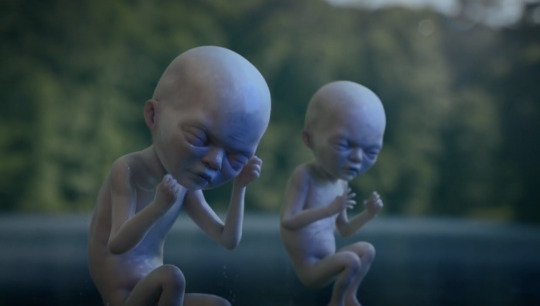
Lorde would also comment on Dr. Manhattan’s Adam and Eve’s resemblance to Phillips and Crookshanks. In “Age, Race, Class, And Sex: Women Redefining Difference”, Lorde discusses how we can deconstruct oppression by embracing difference. Specifically, she says, “the master’s tools will never dismantle the master’s house” [20]. This means that we can’t play the ruling class’ games, we must use our own brains and do something different if we ever want to see true change. This relates to Dr. Manhattan’s Adam and Eve because he didn’t model the people after himself. He made something different, separate from himself. This is promising because difference was embraced; perhaps these people and this world will be perfect. The master’s tools (copies of Dr. Manhattan) were not used.
Also, this Adam and Eve are not true copies of the human race. They combine humans and the superhuman abilities of Dr. Manhattan. This parallels a melding of culture that Hall discusses. In order for black culture to be represented within the white hegemony, it will be adapted and influenced to some degree. This results in black culture influencing white culture, too. So, Hall claims that “always these forms are impure, to some degree hybridized” [21]. This is similar to Dr. Manhattan creating humans; although modeled after Phillips and Crookshanks, there will always be a little Dr. Manhattan influence on them. Phillips and Crookshanks have already influenced Dr. Manhattan to create life on Europa. Dr. Manhattan, Phillips, and Crookshanks have mutual influences on one another similar to different cultures’ mutual influence on one another.

Unlike the scene in “This Extraordinary Being,” this scene in “A God Walks into Abar” doesn’t have direct representation. However, the parallels to real life are clear. Audiences tend to emulate their favorite characters, and since Dr. Manhattan performs deeds that would improve his world, hopefully audiences would perform similar, beneficial actions.
Conclusion
By reviewing the theorists’ papers and using it to analyze The Watchmen, it’s clear that the issues the theorists discuss still exist in modern day society. However, media such as The Watchmen that embrace difference and representation can help mitigate the racial and gender power imbalances that Mulvey, Lorde, and Hall address. The uncanniness that Freud mentions that is sprinkled throughout The Watchmen can be a tool to leave a lasting impact, only furthering the strong messages in the media.
[1] Audre Lorde, “The Master’s Tool Will Never Dismantle the Master’s House” in Sister Outsider (Freedom, CA: The Crossing Press, 1984), 122.
[2] Stuart Hall, “What is this ‘black’ in black popular culture?” in Critical Dialogues in Cultural Studies (London: Routledge, 1996,) 475.
[3] Sigmund Freud, The Uncanny, trans. James Strachey (Imago, 1919), 1.
[4] Laura Mulvey, “Visual Pleasure and Narrative Cinema” in Film Theory and Criticism Introductory Readings, 5th ed. (New York: Oxford University Press, 2009), 712.
[5] Mulvey, “Visual Pleasure and Narrative Cinema,” 712.
[6] Freud, The Uncanny, 2.
[7] Mulvey, “Visual Pleasure and Narrative Cinema,” 712.
[8] Mulvey, “Visual Pleasure and Narrative Cinema,” 712.
[9] Lorde, “The Master’s Tool Will Never Dismantle the Master’s House,” 118.
[10] Hall, “What is this ‘black’ in black popular culture?,” 471.
[11] Hall, “What is this ‘black’ in black popular culture?,” 468.
[12] Freud, The Uncanny, 2.
[13] Mulvey, “Visual Pleasure and Narrative Cinema,” 715.
[14] Mulvey, “Visual Pleasure and Narrative Cinema,” 715.
[15] Mulvey, “Visual Pleasure and Narrative Cinema,” 715.
[16] Lorde, “The Master’s Tool Will Never Dismantle the Master’s House,” 115.
[17] Mulvey, “Visual Pleasure and Narrative Cinema,” 713.
[18] Freud, The Uncanny, 10.
[19] Freud, The Uncanny, 9.
[20] Lorde, “The Master’s Tool Will Never Dismantle the Master’s House,” 112.
[21] Hall, “What is this ‘black’ in black popular culture?,” 474.
The Watchmen, season 1, episode 6, “This Extraordinary Being,” directed by Stephen Williams, written by Damon Lindelof and Cord Jefferson, featuring Regina King and Jovan Adepo, aired November 24, 2019, on HBO Max, VOD.
The Watchmen, season 1, episode 8, “A God Walks into Abar,” directed by Nicole Kassell, written by Jeff Jenson and Damon Lindelof, featuring Regina King and Yahya Abdul-Manteen II, aired December 8, 2019, on HBO Max, VOD.
@theuncannyprofessoro
0 notes
Text
Another way "Another Brick in the Wall" shows conformity is through its repetition. For instance, we see the brick wall closing around a child multiple times. This may represent how even in methods used to make people conform, there is no uniqueness. It may also emphasize the mind-numbing sameness to conformity.
Marx, Althusser, and Benjamin. Oh my!
How the aforementioned theorists' ideas can be applied to music videos such as Pink Floyd's "Another Brick in the Wall Pt. 2" and Rage Against the Machine's "Sleep Now in the Fire"
Another Brick in the Wall
youtube
Pink Floyd's music video for "Another Brick in the Wall Pt 2" offers a powerful critique of societal structures and the education system, making it ripe for analysis through the lenses of Marx and Engels' theory of ruling ideas, Althusser's construction of the state apparatus, and Benjamin's musings on mechanical reproduction. From the beginning of the video, it’s clear that Pink Floyd is criticizing the educational system of the United Kingdom. The first lyrics of the song, “we don’t need no education, we don’t need no thought control” play over a panning shot of a dull and gray city at 0:09 before zooming into a schoolyard of children playing at 0:26. At 0:36, the video cuts to an animation of a ‘teacher’ figure on strings, like a puppet; he is a clear caricature of a scholar that is meant to represent the bottom rung of the educational system, a mere puppet through which the ruling class’s ‘ruling ideas’ may be expressed. This caricature and the way that education is represented throughout the entire music video ties back to Althusser’s description of what he calls the State Apparatus. This theory suggests that institutions such as schools serve to maintain the dominance of the ruling class by perpetuating ideologies that justify the existing social order. This teacher puppet enforces conformity and punishes deviation from the norm. The school is depicted as a repressive institution that indoctrinates students to accept their place within the hierarchical structure of society, thus perpetuating the status quo.
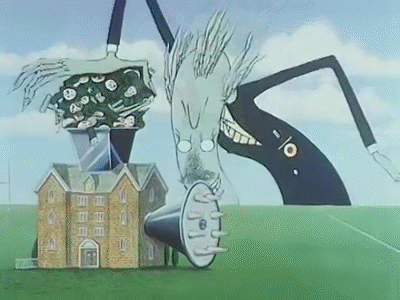
At 0:48, the ‘teacher’ shoves the children into a meat grinder shaped like a school, suggesting that the children are being taken apart and melded into the status quo. The teacher then morphs into a hammer surrounded by a brick wall as the lyrics “all in all it’s just another brick in the wall, all in all you’re just another brick in the wall” play. These lyrics can be interpreted in a few different ways that correlate to the theory we have been reading about; the first ‘wall’ could be Roger Waters’ countless negative experiences with the establishment and school in general, while the second mention of the wall could be interpreted as the proletariat, made up of ‘bricks’ that have been perfectly molded to be exactly the same; to fit together and build a wall of class hierarchy. The next section is made up of a group of children, singing as a chorus that they “don’t need no education” at 1:15. The lights dim and fade to red as they sing, further emphasizing the dangers of indoctrination from educational systems that uphold the ruling ideas.

Remember how the teacher turned into a hammer earlier? Yeah, well now everyone’s a hammer! Around 2:34, the music video shifts focus to older children walking around what could be assumed to be a school. These shots are intercut with personified hammers walking in single file lines together, almost like an army. The hammer could represent many things, but to me, it most obviously highlights the next generation that is ready to ‘hammer’ the ruling ideas of the status quo into the next generation. The hammers continue to move as a unit, scoping out anything that may be out of line. Benjamin’s theories of mechanical reproduction are not so applicable in this video, but it could be argued that a commodification of art is present within the classroom from a historical perspective.
Sleep Now in the Fire
youtube
Rage Against The Machine's music video for "Sleep Now in the Fire" offers a scathing critique of capitalism, corporate greed, and the collusion between government and big business. The very beginning of the video starts with a message about Wall Street’s “record profits” and “record layoffs”, highlighting the connection between the two. It then is stated that Rage Against the Machine have been told to not play on Wall Street, so the next day they do!

via GIPHY
At 0:30, the camera cuts to the back of a police officer’s head. Rage Against the Machine is known for being against the police, as they are a part of the ‘machine.’ This greatly aligns with Althusser’s theory of the state apparatus, with police making up part of the repressive state apparatus. The RSA functions through explicit coercion and the threat of physical force to uphold the law and enforce compliance with the dominant ideology. Police are a perfect personification of this part of the apparatus. At 0:34, the camera cuts to a presumably fake game show for which the title flashes on the screen above the ‘host’ : “Who Wants To Be Filthy F#&%ing Rich?” The host then points at the camera before a contestant eagerly runs onstage to participate. This piece of the music video represents a different but just as interesting piece of the ideological state apparatus; the communications and arts ISA. Things like game shows cement the want for money and shifting your class position, the classic ‘American dream’ type of message (that to Marx, as well as likely to the rest of these thinkers we have been reading about, is impossible). This game show could also be used to argue for Benjamin’s theories of mechanical reproduction, as mass media and the subliminal imagery within it takes away from its artistry and works to serve the ruling class.

Shots of people dancing as they listen to RATM’s music (as they’re surrounded by cops no less) are intercut with the game show participants answering questions about the US government. At 1:24, the question “Number of Americans with no health care?” is on screen, and the two options for an answer are “A: 45 million” or “B: A few old people.” The answer is, of course, “45 million” and I’m sure the number is even higher today… However, this clip reinforces the idea that the ruling class enforces ruling ideas through conditioning. People may assume that healthcare isn’t as much of an issue as it is due to the conditioning from the State Apparatus. More questions, like those about the top 10%, the wealth gap, and even more are shown on screen throughout the duration of the video. There’s a lot more I could say about this video, but I’ll keep it short and sweet so that you can watch it and make judgments for yourself!
Discussion Questions
How do the music videos for Pink Floyd's "Another Brick in the Wall Pt. 2" and Rage Against The Machine's "Sleep Now in the Fire" utilize visual imagery and symbolism to critique capitalist structures? What specific scenes or symbols stand out to you, and how do they contribute to the overall message of each video? Did you find these forms of imagery effective?
How does “Another Brick in the Wall Pt. 2” imply the acknowledgement of the entire ideological state apparatus along with education? In what ways can you connect the message of this song and music video to other elements of Althusser’s theory?
In RATM’s music video, they disregard Wall Street’s declaration that they shall not play music on Wall Street, and yet they do anyways. This shows a very blatant protest against the rules, but it made me think about Marx and Engels’ thoughts on false consciousness; could this be an example of just that? Especially considering that this song and music video were mechanically reproduced, monetized and turned into consumable products in one way or another?
Althusser, Louis. 2006. “Ideology and Ideological State Apparatuses (Notes towards an Investigation).” In The Anthropology of the State. N.p.: Blackwell Publishing Ltd.
Benjamin, Walter. 2009. “THE WORK OF ART IN THE AGE OF MECHANICAL REPRODUCTION.” In FILM THEORY AND CRITICISM Introductory Readings. N.p.: Oxford University Press.
Marx, Karl, and Frederick Engels. 2010. “The Ruling Class And The Ruling Ideas.” In The German Ideology. Vol. 5. N.p.: Lawrence & Wishart.
4 notes
·
View notes
Text
I enjoyed your commentary on "Anima"! You went so in depth about how Benjamin's work applies to it. How would Marx and Engels and Althusser's work apply?
I can think of one way; the in-sync people might represent a middle class. Someone (a ruling class) must be influencing them to perform these movements. Afterall, Marx writes that the ruling class has mental and material control over a society. And anyone that doesn't conform, like Thom Yorke, is an outsider. This might make him part of a lower class, but it also gives him the potential to think outside the box, somehow become part of the ruling class, and change society.
How else could the other theorists' works apply?
Discussion Leader Panel Presentations
Pink Floyd: Nothing but the Machine

Young students run around causing a ruckus, complaining about their evil teacher who traps them with the masses. Being a hundred times the size of the students who are ants in comparison, the teacher has an easy time putting the kids into the roof of a standard British home that appears to be a funnel and are turned into spaghetti as he watches through his glasses where one lens enlarges into a magnifying glass. The students' lack of individuality reigns supreme in Pink Floyd’s, “Another Brick in the Wall, Part Two,” they are just another noodle. In “The Ruling Class and The Ruling Ideas,” Karl Marx and Friedrich Engels make the point that the ruling class, the teachers, control the means of material and mental labor, which is divided for one half to appear as thinkers while the other stays passive and grounded in reality. This allows for one class to rule all just like a teacher runs a classroom in 1970s England (Pg. 59-60). Marx and Engels discuss how ideas are not independent of politics, just as music and art are intertwined with politics. Pink Floyd were one of the most influential bands to criticize the education system and how teachers back then put kids in a box as seen in the imagery of a white brick wall encasing a student sitting on the dirt ground. In “Ideology and Ideological State Apparatuses,” Louis Althusser writes:
“School (but also other State institutions like the Church, or other apparatuses like the Army) teaches ‘knowhow’, but in forms which ensure subjection to the ruling ideology or the mastery of its ‘practice’. ‘professionals of ideology’ (Marx), – the tasks of the exploited (the proletarians), of the exploiters (the capitalists), of the exploiters’ auxiliaries (the managers), or of the high priests of the ruling ideology (its ‘functionaries’), etc” (Pg.88).
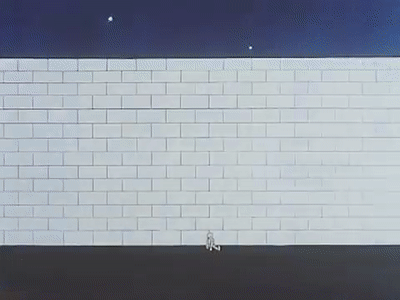
Pink Floyd paints a picture of the ruling class quite literally trapping a child inside a brick wall by the high priest Althusser speaks of, the teacher. Keeping the youth trapped without hope of living their dreams only will force them into the wall of never contradicting their superiors and never accomplishing anything. Instead, the children will end up in the workforce where they will be miserable.

The sad reality is presented in the shot of silver hammers with red and black handles marching like the military in a dark and cloudy night. Each hammer represents a different child who the high priests trapped into our established system, even if that means the children are unhappy because they grew up to work meaningless jobs. Pink Floyd, Marx, Engels and Althusser all agree that the system's hierarchy is oppressive as the ruling class subjects everyone else into a working majority that builds the infrastructure that keeps the upper class afloat and in power. It's a cycle where the high priests manipulate the children to be the same as everyone else so they stay and grow up to work the same jobs as their parents just like their own kids will.
Thom Yorke and the Aura of Surrealism
vimeo
Thom Yorke from Radiohead and The Smile made a solo album titled “Anima” and a short film with Paul Thomas Anderson of the same title to go along with it. The film features the songs, “Not the News,” “Traffic” and “Dawn Chorus.” In Walter Benjamin's essay, "The Work of Art in the Age of Mechanical Reproduction," he discussed mechanical reproduction and how it depleted the uniqueness of works of art, writing “even the most perfect reproduction of a work of art is lacking in one element: its presence in time and space, its unique existence at the place where it happens to be” (Pg. 667). Thom Yorke is one of the few modern musicians who proves Benjamin's critique of artistic authenticity wrong. “Anima” exists outside of time and space. Benjamin’s comments on retakes in film and music is that it depletes the aura of the piece. Maybe multiple takes does make a work of art less organic, but Paul Thomas Anderson’s direction appears natural in its own right as the film begins with a location all too familiar for many people, the train.
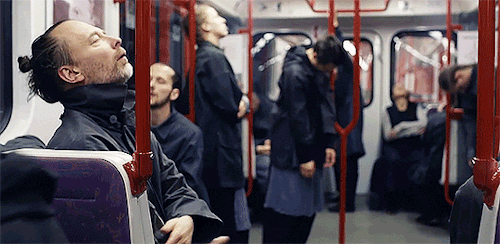
To perfect something, or rather to record something numerous times can only benefit the artwork at hand, but that's just my opinion. Benjamin does speak on the meaning of aura relating to authenticity and Yorke and Anderson show the inside of a subway where everyone is wearing the same coat and flips it over with a choreographed dance sequence of each person moving their body in a bizarre lifeless way. Yorke and Anderson make their point that authenticity and surrealism can go hand and hand.

After the dance sequence, Thom Yorke picks up a woman's briefcase and proceeds to exit the train to give it back to her. Instead, he loses her and wanders around in a dream-like dystopian world. He is searching for answers but nothing is received. There's a point where he tries to exit the station but the turnstile won't move. The same people in identical trench coats continue to walk through the turnstile right next to him, but his still won't budge. The audience is left to ponder the question of what it meant. This is exactly what I want out of art, displaying an ambiguous critique of society. Art becomes repetitive when the answers are given to the viewer instead of the filmmakers forcing the audience to think critically about the film and its meaning. Thom Yorke and Paul Thomas Anderson let the viewer experience a dream-like state so they can apply it to an everyday event such as taking the train to work. Yorke and Anderson are breaking the laws of time and space in the film with surreal imaginary and bizarre and striking choreography. “Anima” created its own aura that is not aligned with the idea that a piece needs to be viewed in a specific way or the authenticity will be lost. The authenticity of “Anima” is its unique and uncanny perspective on reality. Maybe Walter Benjamin wouldn’t mind retakes if films were as inventive as “Anima.”
Critical Thinking Questions
According to Marx and Engels, ideas are not independent from politics. Do you think art and politics should be grouped together or can the two be separate?
Is Pink Floyd’s “Another Brick in the Wall, Part Two” overly cynical towards capitalism that's perpetuated by what Althusser describes as “high priests,” or is it justified?
Do you agree with Walter Benjamin's opinion that retakes deplete the aura of films?
Marx, Karl. Marx and Engels Collected Works Volume 5: Marx and Engels 1845-47. Lawrence & Wishart Limited, 1976.
Sharma, Aradhana, and Akhil Gupta. The anthropology of the state: A reader. Oxford, UK: Blackwell Publishing, 2006.
Braudy, Leo, and Marshall Cohen. Film theory and criticism: Introductory readings. New York: Oxford University Press, 2009.
9 notes
·
View notes
Text
In your post you mentioned how the outfits in "Telephone" are revealing and for the male gaze. However, they can also be empowering, like the one Beyonce wore when she poisoned the guy at the diner. Another outfit that fits both categories is the striped outfit Madonna is first seen in. It could be for the male gaze because of its deep neckline and Madonna is stripped out of it, but it could also be empowering because it's big, bold, and screams "I'm still fashionable even though I'm in prison, I can get what I want".
It's interesting how both "Telephone" and "Q.U.E.E.N." feature striped outfits. Do you think there's any symbolism to these stripes?
Panel Presentation: "Telephone" by Lady Gaga ft. Beyoncé & "Q.U.E.E.N." by Janelle Monáe ft. Erykah Badu
By Sophie Goldberg
youtube
"Telephone" by Lady Gaga ft. Beyoncé
The music video Telephone by Lady Gaga ft. Beyoncé serves as a continuation of "Paparazzi", where Gaga was arrested for killing her abusive boyfriend by poisoning his drink. It features a storyline where Lady Gaga is imprisoned but eventually escapes with Beyoncé's help, and they then go on to poison Beyoncé’s boyfriend and others in a diner and run from the police.
Laura Mulvey, “Visual Pleasure and Narrative Cinema”
Mulvey discusses the concept of the male gaze, where the camera represents the perspective of a heterosexual male viewer, objectifying female characters for the pleasure of the male audience. Beyonces and Lady Gaga’s portrayal aligns with certain aspects of the male gaze. The music video inevitably attracts male attention as the camera frequently lingers on their bodies and costumes, emphasizing their sexuality and allure. Mulvey states “Traditionally, the woman displayed has functioned on two levels: as erotic object for the characters within the screen story, and as erotic object for the spectator within the auditorium” (716). For example, when Lady Gaga first enters the prison everyone is wearing revealing clothes, and as she's pushed into her cell officers strip her down, leaving her with nothing but fishnets. Another instance occurs when Lady Gaga and three other women wear studded bikinis and engage in a provocative dance down the prison corridors. Spectators also see them through the lens of a security camera, furthering the voyeuristic aspect.

However in "Telephone," both Lady Gaga and Beyoncé also challenge traditional notions of passive femininity by taking on assertive, dominant roles. Mulvey states that “pleasure in looking has been split between active/male and passive/female’ (715). Women are presented as spectacle as the man's role is “the active one of forwarding the story,” (716) Lady Gaga and Beyoncé disrupt traditional narrative conventions by defying societal expectations of female passivity and instead taking control of their own narrative. Gaga and Beyoncé portray themselves as empowered and even dangerous figures as in the music video there are depicted acts of violence against men.
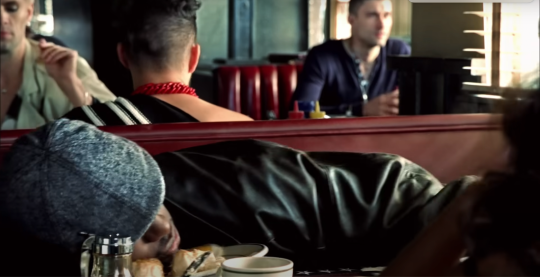
Bell Hooks, “Oppositional Gaze: Black Female Spectators”
Hooks discusses how Black female spectators often engage with media representations critically as “ mass media was a system of knowledge and power reproducing and maintaining white supremacy. To stare at the television, or mainstream movies, to engage its images, was to engage its negation of black representation.” (308) In "Telephone," Beyoncé's confident demeanor, assertive actions, and her role as the one with more agency than Lady Gaga—having the power to bail her out of jail—can be viewed as empowering examples of Black women asserting their autonomy within mainstream media.

Furthermore, Hooks critiques mainstream media for its tendency to eroticize and objectify Black women's bodies. In the video, there is a moment in which there is a high angle shot of Beyoncé's cleavage as she sits across from her boyfriend in the diner. Although, within the framework of the oppositional gaze, Beyoncé's character adopts a rebellious stance, refusing to conform to the gaze of desire and possession. Instead, she asserts her power by poisoning her misogynistic boyfriend and evading the police.
Audre Lorde, “Age, Race, Class, and Sex: Women Redefining Difference”
In Lorde's essay, she states “As women, we must root out internalized patterns of oppression within ourselves if we are to move beyond the most superficial aspects of social change.” (122) One such pattern is internalized misogyny, where women devalue themselves and others, which can lead to judgmental attitudes towards different lifestyles and choices. In "Telephone," Beyoncé exemplifies Lorde's words by not passing judgment on Lady Gaga's choices when she bails her out of jail. Despite their differing lifestyles, they unite against a common oppressor. Furthermore, societal expectations surrounding gender roles can also be internalized forms of oppression, such as conforming to domestic responsibilities. In the video Lady Gaga challenge these norms when she incorporates the stereotype of women in the kitchen within a segment titled “Lets Make a Sandwich”, but instead of adhering to these norms she instead puts poison in all of the food.

Furthermore, Lorde underscores the need to recognize differences among women as equals , relate across the differences, and utilize them to enrich collective visions and struggles. This is shown in the music video through the camaraderie and alliance depicted between Lady Gaga and Beyoncé. The video embraces diversity within feminism, showcasing representations of differences in sexuality and race, yet emphasizing a shared goal of empowerment. This sentiment is also echoed in the lyrics, “Boy, the way you blowin' up my phone , Won't make me leave no faster, Put my coat on faster, Leave my girls no faster”

youtube
"Q.U.E.E.N." by Janelle Monáe ft. Erykah Badu
Janelle Monáe's music video for 'Q.U.E.E.N.,' featuring Erykah Badu, serves as a freedom anthem within a science fiction dystopia. The title itself, 'Q.U.E.E.N.,' is an acronym representing marginalized communities: Queer, Untouchables, Emigrants, Excommunicated, and Negroid, reclaiming royal imagery to challenge traditional hierarchies of race, sexuality, and class. Monáe's Afrofuturist vision suggests a revolution, where marginalized communities and differences are celebrated rather than ostracized. The music video features rebel time-travelers that are frozen in a museum and brought to life by music. In the video's narrative, the song functions as part of a “musical weapons program” that disrupts the status quo, allowing the rebels to move through history and forge a new future in the present.
Laura Mulvey “Visual Pleasure and Narrative Cinema”
Mulvey argues that traditional cinematic narratives often reinforce patriarchal ideologies and power structures as they cater to a male gaze. The music video "Q.U.E.E.N." offers a narrative that challenges this as it features strong, empowered female protagonists who challenge traditional gender roles and expectations. Janelle Monáe wears a black-and-white tuxedo, disrupting the traditional notion of gendered clothing styles. The ladies all dance with each other and build eachother up such as when they reply and affirm each other “Is it peculiar that she twerk in the mirror? And am I weird to dance alone late at night? (Nah) And is it true we're all insane? (Yeah) And I just tell 'em, "No we ain't" and get down”. Here, the mention of twerking in the mirror is not sexualized but used to empower the female body.
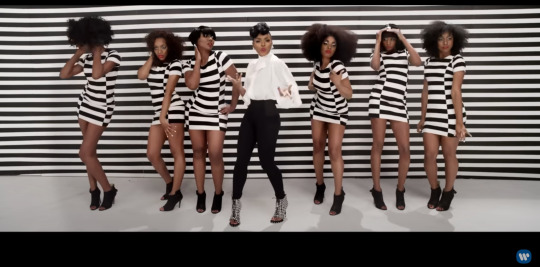
Bell Hooks, “Oppositional Gaze: Black Female Spectators”
The oppositional gaze is seen in the music video as Black female spectators engage with the visual representation of empowerment and resistance depicted in the video. Monáe uses both queerness and Blackness as examples of modern “freakishness.” Monáe doesn't assign a "freaky" status to queerness or Blackness herself, instead, she challenges listeners to interrogate why these identities are perceived as "freaky." She suggests that what society deems as "freaky" is simply the act of being true to oneself. The lyrics declare those differences as things to be proud of stating "Even if it makes others uncomfortable, I will love who I am". Monáe and Erykah Badu illustrate the way society "freakifies" their Blackness, showcasing how joy and celebration within Black culture are often viewed negatively due to racist stereotypes. The hook in the song highlights this, asking: “Am I a freak for dancing around? Am I a freak for getting down? I’m cutting up, don’t cut me down.” Black female spectators can find empowerment in seeing how the song recognizes differences and individuality as prideful assets.
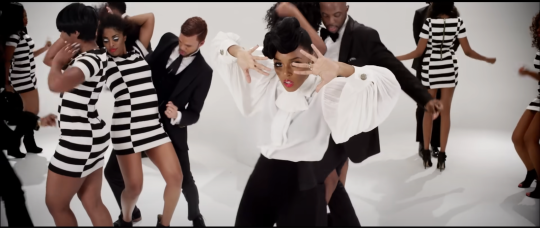
Audre Lorde, “Age, Race, Class, and Sex: Women Redefining Difference”
Lorde emphasizes the importance of recognizing the intersections of age, race, class, and sex in understanding women's experiences. The video highlights the oppression faced by diverse identities and experiences of Black women, as well as showcases their resilience in the face of it. The lyrics “Add us to equations but they'll never make us equal” resonates with Lorde’s claim that simply incorporating marginalized groups into existing systems does not address the underlying power imbalances or inequalities. Monáe’s next lyrics recognizes these inequalities stating “She who writes the movie owns the script and the sequel, So why ain't the stealing of my rights made illegal? They keep us underground working hard for the greedy, But when it's time pay they turn around and call us needy (needy)” Lorde further advocates for collective action and solidarity among women of different backgrounds to achieve liberation. In "Q.U.E.E.N.," the song's message of female empowerment and solidarity is highlighted as Monáe and Badu come together to celebrate different identities, for example sexual and racial identity. Janelle Monáe promotes unity and collaboration among women as she says “Will you be electric sheep? Electric ladies, will you sleep? Or will you preach?” According to Janelle Monáe it is up to this community and this generation to create its new norm and break down the walls that limit them.

Discussion Questions:
Lorde says ““By and large within the women’s movement today, white women focus upon their oppression as women and ignore differences of race, sexual preference, class and age. There is a pretense to a homogeneity of experience covered by the word sisterhood that does not in fact exist.” In the music video, do you think Lady Gaga is focusing on the oppression of just women in general and treating the experience of all women the same, or is she not necessarily ignoring the differences but the video just does not explicitly address them .
Is trying to make money and bring attention using our bodies promoting sexism even though it is our choice and feel empowering or confidence boosting
In music videos is using Sexuality and promiscuity still catering to the male gaze even if they are active agents in the narrative? What about in the cinema?
7 notes
·
View notes
Text
Like you mentioned in your post, I loved the clear message in "Thot Shit." I think the imagery contributed greatly to it. For one, there were references to Nightmare on Elm Street and The Shining, further implying that this is the senator's worst nightmare. To him, it's terrifying how much power these women have. Also, I think the last shot of the senator's mouth replaced with a labia is very striking. He's not in control; he depends on women. I enjoyed how the images were shocking yet symbolic.
Panel Presentation: "Telephone" and "Thot Shit"
youtube
“TELEPHONE” LADY GAGA & BEYONCE
In Lady Gaga’s “Telephone” (ft. Beyonce) music video, she centers two women criminals, half of the video taking place at a women's prison and the other half following the homicide the women (played by Gaga and Beyonce) set out to commit. The first striking thing about the video is the immediate use of women’s bodies. All the women in the prison are wearing revealing outfits, even the women security guards. As Gaga walks down the cells, the fellow prisoners (all female-presenting) hoot and holler and as character is thrown into her cell, the guards promptly rip off her clothes. This is an example of the use of a woman’s body that is not centering the male gaze. While a male gaze still may derive pleasure from the revealing costumes in the video, these characters are not necessarily designed to be seen as sexy by the male spectator. In Laura Mulvey’s “Visual Pleasure and Narrative Cinema,” she writes that media depictions of women in a patriarchal culture stand as a signifier for the male other - meaning that women characters are present to engage with the male fantasy (1). While most of the women in the music video are partially nude or in revealing costumes, they are not doing so in a sexual nature. Their nudity and sexuality isn’t aiming to please men but to claim their own sexual identity. Mulvey also touches on how women’s bodies in “alternative cinema” can be also a radical or political aspect that challenges the basic assumptions of mainstream media, instead of just being objects for pleasure (2). Women’s bodies are shown in “Telephone” in different ways than usual music videos – there is more of a diversity in beauty and a roughness to them – these bodies are asking to be looked at.
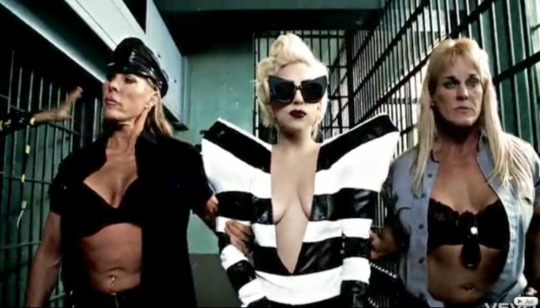
In hooks’ “The Oppositional Gaze: Black Female Spectators,” she writes about the “right to gaze.” Specifically, she references: “the politics of slavery, of racialized power relations, were such that the slaves were denied their right to gaze” (3). In these racialized power relations, she writes that Black people were not permitted to engage in the same freedom of watching, entertainment, or deriving pleasure from what they were seeing. This structure ultimately permeates to this day, as hooks writes that of the Black women she spoke to, none were excited to attend the movie theaters, knowing they would not be properly represented (4). How “Telephone” works in contrast with this trend is allowing spectators to look at and derive pleasure from the woman’s body. The idea of the oppositional gaze is a major part of the video because it challenges the ideas of dominant images that women must conform to. The video’s way of resisting the hegemonic gaze was to place the power into the hands of the women characters and for their bodies and strength to be shown without comparing it to that of a male character. hooks references Manthia Diawara to talk about the power of the spectator: “Every narration places the spectator in a position of agency; and race, class and sexual relations influence the way in which this subjecthood is filled by the spectator” (4) (309). Each person, specifically women, watching this music video could feel a sense of agency after experiencing women characters having power over their own bodies.

On the topic of bodies, the music video employs a semi-diverse cast of women in the video (the majority of women in the video are still white). Specifically, a lot of the women have stark differences about them like ethnicities, age, or sexual identity. In Audre Lorde’s “Age, Race, Class, and Sex: Women Redefining Difference,” she writes that emphasizing differences is usually taught to be bad or ignored, “or to view them as causes for separation and suspicion rather than as forces for change” (5). In “Telephone,” the differences between these women in prison or Beyonce and Gaga as criminals is distinctly outlined. It is unclear with what Gaga and the writers of the video were trying to accomplish with the “outsider-ness” of the characters in the video – if they were trying to make them look bad or powerful –but one could argue that these women could fit into the archetype of rebels, not caring about society’s rules for them, and that would empower the viewer. It could also be argued that these women are represented by a stereotype of women in prison: violent, erratic, and their homosexuality coming off as predatory and creepy. Mulvey references those who have stood “outside the circle of this society’s definition of acceptable women; those of us who have been forged in the crucibles of difference” (6). “Telephone” puts examples in its video of women on the “margins of society,” but their purpose of being there is unclear to the viewer.

Questions:
Do you think that the other women in the video are meant to be powerful or other-ed, just perpetuating a stereotype?
Do you think “Telephone” practices using the “oppositional gaze”?
How do you think the sexual nature of woman characters in the video differs from other media depictions we have seen?
youtube
“THOT SHIT” MEGAN THEE STALLION
At the beginning of the “Thot Shit” music video, the character of the senator is shown leaving a hate comment on one of Megan’s former music videos (“Body”). When he receives a phone call from Megan she tells him “the women that you are trying to step on are the women you depend on. They treat your diseases, they cook your meals, they haul your trash, they drive your ambulances, they guard you while you sleep. They control every part of your life. Do not fuck with them.” This quote is then the theme for the rest of the video. As the senator tries to escape, Megan and her dancers have taken over every occupation and are dancing in his face. Something interesting in this video is the idea of scopophilia that the senator is taking part in. While he is at first closing his blinds and leaving hate comments before gazing, now Megan and her dancers are forcing him to look, owning their image. Mulvey writes about scopophilia in media/cinema, especially tasteful/pleasurable looking (7). While so much of scopophilia in mainstream media is about privacy and what’s “implied,” it could be argued that Megan is subverting the narrative by using her body and her dancers’ bodies freely and without concerns of what is “forbidden.” It could be seen as an act of agency.
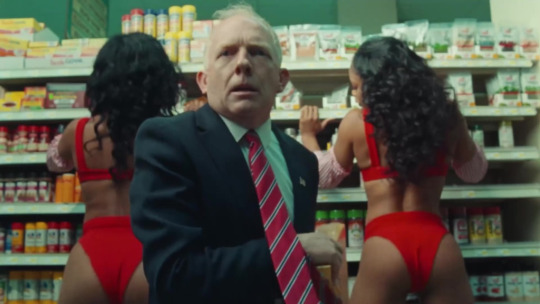
hooks herself may argue that “Thot Shit” is an example of Black women having that sense of agency – the Black women throughout the video have multiple careers while also having the freedom of sexuality. She writes: “Spaces of agency exist for Black people, wherein we can both interrogate the gaze of the Other but also look back, and at one another, naming what we see” (8). This quote encapsulates “Thot Shit” perfectly: a place that Black people can exist freely while also interrogating the gaze of the other. The music video is special because it is a way that Megan celebrates Black women but also the integral part that Black women play in society. They are portrayed as critical parts of a working society but also they dance in the video, owning their sexuality. The sexual nature of the women in the video ties to another example of hooks’ writings about Black women in film/media: the absence “that denies the 'body' of the Black female so as to perpetuate white supremacy and with it a phallocentric spectatorship where the woman to be looked at and desired is ‘white’” (9). hooks writes that too often Black women have been denied ownership and agency over their own bodies, but also the ability to be desired by white phallocentric audiences. By using the character of the senator, they show the inherent racism imposed against Black women - people criticize them but then still sexualize them. Something important to mention is Megan’s lyricism in this song - the word “thot” was coined in the hip-hop world as a derogatory term for a woman, similar to the word “slut,” “with added derision for being working class” (10) (WaPo article). The reclamation of this term is outright powerful because it is using a word that has been weaponized against Black women for years and she repurposes it to be something powerful. This subversion in itself can be tied to the work of the oppositional gaze - taking something used to oppress Black women and flipping it to empower them instead.

Rarely in popular media as big as “Thot Shit” do viewers see something with such a clear message. Megan does include a lot of Black female empowerment throughout her music and music videos, especially through sexual agency. Lorde writes, “Black women and our children know the fabric of our lives is stitched with violence and with hatred, that there is no rest. We do not deal with it only on the picket lines, or in dark midnight alleys, or in the places where we dare to verbalize our resistance. For us, increasingly, violence weaves through the daily tissues of our living … ” (11). “Thot Shit” is a form of protesting against the dehumanization and oppression of Black women in mainstream culture. Megan consistently brings Black women into the cultural conversation when they are neglected. Her empowerment is similar to that Lorde writes of: “It is learning how to stand alone, unpopular and sometimes reviled, and how to make common cause with those others identified as outside the structures in order to define and seek a world in which we can all flourish” (12).

Questions:
What are other ways that “Thot Shit” practices scopophilia and voyeurism in nuanced ways?
How is the video different from other music videos you have seen before?
How does “Thot Shit” work in conjunction with “Telephone”?
Works cited:
Mulvey, Laura, “Visual Pleasure and Narrative Cinema” in Film Theory and Criticism, 712. (New York: Oxford University Press, 2009)
Mulvey, Laura, “Visual Pleasure and Narrative Cinema.” 712
hooks, bell, “The Oppositional gaze: Black Female Spectators” in Feminist Film Theory, 307. (New York: New York University Press, 1999)
hooks, bell “The Oppositional gaze: Black Female Spectators.” 310
Lorde, Audre. "Age, Race, Class, and Sex: Women Redefining Difference." In Sister Outsider: Essays and Speeches, 112. Berkeley, CA: Crossing Press, 2007
Lorde, Audre “Age, Race, Class and Sex: Women Redefining Difference.” (112)
Mulvey, Laura, “Visual Pleasure and Narrative Cinema.”
hooks, bell, “The Oppositional Gaze: Black Female Spectators.” 308
hooks, bell, “The Oppositional Gaze: Black Female Spectators.” 310
O’Neal, Lonnae, “I had a thot but didn’t know it was a thing” The Washington Post, March 19, 2015
Mulvey, Laura, “Visual Pleasure and Narrative Cinema.” 119
Mulvey, Laura, “Visual Pleasure and Narrative Cinema.” (112)
@theuncannyprofessoro
9 notes
·
View notes
Text
What are your thoughts on music videos that recreate movies? (ex. Silk Chiffon, thank u next, etc.) Does it add to the video? Or is it just an example of meaningless reproduction in the culture industry?
Gender and Sexuality II
Justify My Love - Madonna
youtube
Judith Butler, “Gender is Burning: Questions of Appropriation and Subversion”
Butler famously argues that gender is not an inherent trait, but rather a social construct enacted through repeated actions and behaviors. In the video, Madonna and the other performers embody various forms of gender expressions, challenging heteronormative norms and expectations of each gender [1].
Throughout the video, Madonna's hypersexualized portrayal of femininity serves as an example of gender performativity. Through exaggerated gestures, provocative clothing, and sensual movements, Madonna constructs and embodies her gender identity in a deliberate and theatrical manner.
Additionally, the presence of other performers engaging in non-cis and non-heteronormative expressions of gender further emphasizes the fluid and performative nature of gender. From crossdressers to androgynous people, each character showcases unique expressions that disrupt binary notions of masculinity and femininity. This multiplicity of gender performances emphasizes Butler's argument that gender is not fixed but rather contingent on cultural and social contexts.
Butler's assertion that "heterosexual privilege operates in many ways, and two ways in which it operates include naturalizing itself and rendering itself as the original and the norm" [2], however, is not reflected in the video. The video presents queer people and queer sexual interaction without sensationalizing or othering them. Instead, it depicts queer relationships as equally erotic and natural as those of straight couples. Thus, through its non-exploitative depiction of queer intimacy, the video contributes to the normalization and celebration of LGBTQ+ identities and desires within mainstream media.
Jack Halberstam, “Looking Butch: A Rough Guide to Butches on Film”
In the music video, the portrayal of lesbians as more masculine reflects societal perceptions that equate lesbian desire with masculinity. For instance, when Madonna kisses another woman who appears more masculine, the other woman assumes the dominant role. Later in the video, this same woman accentuates her masculine presentation by drawing on a mustache, reinforcing the association between lesbianism and masculinity. As Halberstam argues, "the butch [lesbian] makes lesbianism readable in the register of masculinity, and it actually collaborates with the mainstream notion that lesbians cannot be feminine" [3]. By showcasing predominantly masculine-presenting individuals in lesbian moments, the video perpetuates the stereotype that only those who conform to traditional masculine ideals can be lesbians. Moreover, the emphasis on the masculinity of butch lesbians in the video can inadvertently become a trap for lesbian representation, as Halberstam notes [4]. It relies on stereotypical homophobic constructions, echoing Esther Newton's concept of "the mythic mannish lesbian" [5]. This perpetuates harmful narratives that not only restrict gender identities but also limit the representation of more feminine-presenting lesbians within the LGBTQ+ community.
Silk Chiffon - MUNA
youtube
youtube
Judith Butler, “Gender is Burning: Questions of Appropriation and Subversion”
MUNA's "Silk Chiffon" video, inspired by "But I'm a Cheerleader," illustrates Judith Butler's ideas in "Gender is Burning: Questions of Appropriation and Subversion." Butler's work explores the performative nature of gender and the ways in which norms are constructed and enforced through repeated acts [6].
In the video, the camp's strict enforcement of traditional gender roles, with girls dressed in pink and boys in blue, mirrors Butler's concept of gender performativity. The camp's attempt to prescribe specific activities based on gender, such as boys engaging in physically demanding tasks like cutting logs while girls are assigned domestic chores like cleaning, emphasize how gender norms are socially constructed and enforced instead of inherent to any gender.
Additionally, Butler argues that gender is not only performed on an individual level but also reinforced and perpetuated through institutions and cultural norms [8]. The camp setting in the video serves as a microcosm of this phenomenon, where gender norms are enforced through institutional rules and practices. By highlighting how these norms are ingrained within social institutions, the video underscores Butler's assertion that gender is not just enacted but also institutionalized.
Jack Halberstam, “Looking Butch: A Rough Guide to Butches on Film”
In MUNA's "Silk Chiffon" video, the portrayal of gender roles reflects societal perceptions of lesbians as conforming to masculine ideals. Halberstam notes that butch lesbians are often seen as making lesbianism "readable" through masculinity, reinforcing the notion that lesbians cannot be feminine [9].
The video's depiction of a conversion camp, where girls are taught traditional gender roles to become more feminine, aligns with this idea. By enforcing stereotypical gender behaviors, the camp attempts to erase lesbian identity by making them conform to heterosexual norms. This underscores Halberstam's observation that society often believes femme lesbians are less likely to be identified as lesbians.
Nevertheless, the video subverts this narrative by including queer characters representing a variety of gender expressions. This challenges the mainstream notion that lesbians must conform to masculine ideals to be visible. Instead, the diverse representation of lesbians in the video suggests a broader critique of the limitations of gender norms and celebrates the complexity and diversity of lesbian identities beyond traditional stereotypes.
Furthermore, this video's depiction of sapphic relationships defies the traditional portrayal of a lesbian assuming a "masculine" role in a relationship, like most media. This portrayal disrupts the pattern where same-gender relationships are often depicted through a heterosexual lens, perpetuating the idea that only individuals with masculine traits can be attracted to women.
Discussion questions:
How does Madonna's portrayal of hypersexualized femininity in the video challenge or reinforce traditional gender expectations and stereotypes?
In what ways do current societal attitudes towards gender, and sexuality affect our interpretation and understanding of the video's themes?
Do you think the reception of the video would have been different if MUNA were not queer artists?
How might their queer perspective add layers of meaning and irony to the portrayal of gender roles and relationships in the video?
Works cited
[1] Butler, “Gender is Burning: Questions of Appropriation and Subversion," 341.
[2] Butler, “Gender is Burning: Questions of Appropriation and Subversion," 339.
[3] Halberstam, “Looking Butch: A Rough Guide to Butches on Film," 177.
[4] Halberstam, “Looking Butch: A Rough Guide to Butches on Film," 176.
[5] Halberstam, “Looking Butch: A Rough Guide to Butches on Film," 176.
[6] Butler, “Gender is Burning: Questions of Appropriation and Subversion," 341.
[8] Butler, “Gender is Burning: Questions of Appropriation and Subversion," 342-344.
[9] Halberstam, “Looking Butch: A Rough Guide to Butches on Film," 177.
7 notes
·
View notes
Text
I think another reason "i" feels real is because the melody is so upbeat, but it contrasts with the darker background. This makes Lamar, who is dancing, feel like he's in his own world. He has on rose-colored glasses because he's a child. He's innocent. It adds a realistic complexity to the music video.
Discussion Leader Panel Presentation - Race and Representation
youtube
While the song “Can’t Hold Us Down” by Christina Aguilera1 is mostly about female empowerment and resisting gender stereotypes, the music video conveys even more, with stark imagery of a community that is made up primarily of people of color. The intersectionality that the video possesses is key to understanding its message. In Stuart Hall’s essay “What is this ‘black’ in black popular culture?2,” he introduces his idea that the “Black” in Black popular culture is not a set idea, rather it is a fluid conversation of Blackness. In his words, “What we are talking about is the struggle over cultural hegemony, which is these days waged as much in popular culture as anywhere else”3. While, as I stated earlier, on the surface this video is about what it means to be a woman, its underlying themes are of race and representation, which is the real battle being fought. This intersectionality is still key to Hall’s philosophy. As he says, “We are always in negotiation, not with a single set of oppositions that place us always in the same relation to others, but with a series of different positionalities”4. Aguilera’s exploration of themes of sexuality while using the backdrop of a primarily people-of-color community is this video’s way of continuing the conversation about what it means to be “Black”, or in the video’s case, simply “other”. “The Other” is a concept Edouard Edward Said introduces in his seminal book Orientalism5. In the context of the Orient, better known as Asia, he states that “The Orient is not only adjacent to Europe; it is also the place of Europe’s greatest and richest and oldest colonies, the source of its civilizations and languages, its cultural contestant, and one of its deepest and most recurring images of the other”6. He goes on to say that Europe sees Asia as “its contrasting image, idea, personality, experience”7, yet it is “an integral of European material civilization and culture”7. While Aguilera’s video does not explicitly speak about Orientalism, some key themes are very present. In Orientalism, Said refers to the way Asia is perceived as “‘a place of romance, exotic beings, haunting memories and landscapes, remarkable experiences”6. Essentially, Orientalism places emphasis on the mystification of Asian culture, through the power of European colonialism. The environment Aguilera’s video is set in is extremely colorful, and, as previously mentioned, mostly populated with people of color. Most of the very few white people in this video appear in the beginning, shown throwing milk into the street below. This can be seen as a representation of Orientalist themes. The white people are placed above the people of color who populate the streets below, and throw milk onto them, which can represent the Orientalist turn of imposing Euro-centricity on the culture of those colonized and disenfranchised.
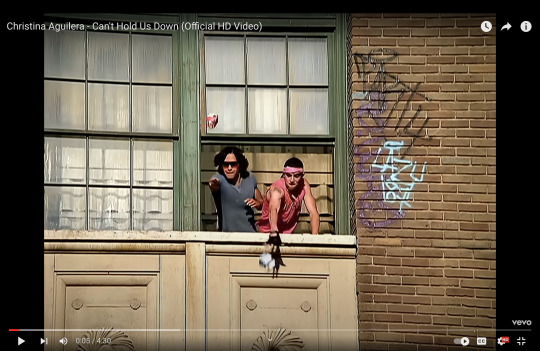
Of course, the question must be asked, is this music video an authentic representation of the culture and community that it’s presenting to us? In their book Unthinking Eurocentrism8, Ella Shohat and Robert Stam consider the way that race and representation exist in the media. Under the section “Writing Hollywood And Race” in the chapter “Stereotype, Realism And The Struggle Over Representation,” they argue that there is an important distinction between media image and social reality. They use the documentary Color Adjustment to help their argument, stating that “Color Adjustment underlines this contrast between media image and social reality by suggestively juxtaposing sitcom episodes with documentary street footage”9. I’d like to pose the thought that perhaps Aguilera’s video would fall under the category of sitcom in this comparison, at least when it comes to the ideas of race and representation. Aguilera, who is of Ecuadorian, German, Irish, Welsh, and Dutch descent, did not grow up in people of color dominated areas of New York. She lived in Wexford, PA for most of her adolescence, a town in a majority-white county. This music video may feel inauthentic to many because it may not be authentic to Aguilera’s experiences. Which brings me to Kendrick Lamar
youtube
Kendrick Lamar grew up in Compton, CA, at a time when the city’s high crime rates were national news, due to the prominence of gangster rap groups like NWA. The music video for his song “i”10 showcases this environment prominently. From the cars to the police uniforms, the video harkens back to a time when Kendrick was growing up in South Central Los Angeles. In my estimation, Kendrick Lamar’s video represents more of the “documentary footage” that Shohat and Stam mentioned in their comparison with media image and social reality. Aguilera’s video can be felt as inauthentic because it feels like a sitcom, not in a comedic way but in a matter of faux reality. Kendrick’s video feels like a documentary because of its groundedness in his childhood and the experiences of his city. It should be noted that Aguilera appears to darken her skin in her video. As previously stated, Hall believes that popular culture is a place where the concept of “Black” is able to be conversed about. Kendrick, in his music video for “i”, is able to redefine “Blackness” on his own terms. He presents different depictions of Black characters in every moment. One moment that shows great contrast of character and incredible conversation in his own mind on the topic of “Blackness” comes at the 2:20 mark in the video for “i”11.

Kendrick walks past a house, on the front porch of which a man yells at a woman; presumably they are in a relationship. In this very same moment, two Black children, one boy and one girl, run by, playing together, juxtaposing the depiction of adult negativity behind them. There are many things that can be interpreted from this shot, which perhaps even greater lends itself to the argument that it is more “documentary footage”. The perceived authenticity of Kendrick Lamar’s “i” video thus lends itself to a challenge of Orientalist ideals. While the video does show White police officers arresting a Black man at 1:4312, seemingly exerting that idea of power over “the other” that Orientalism is built so much upon, it is immediately followed by Kendrick and his crew of dancers/partygoers weaving through the group of cops with numbers that far outweigh what the cops possess, thus re-establishing power over themselves.

Works Cited
1Aguilera, Christina. “Christina Aguilera - Can’t Hold Us Down (Official HD Video).” YouTube, November 18, 2009. https://www.youtube.com/watch?v=dg8QgUIKXHw&t=196s.
2Hall, Stuart. “What Is This ‘Black’ in Black Popular Culture?” Essay. In Critical Dialogues in Cultural Studies. London, United Kingdom: Routledge, 1996.
3Hall. “What Is This ‘Black’ in Black Popular Culture?”, 471
4Hall. “What Is This ‘Black’ in Black Popular Culture?”, 476
5Said, Edward. “Introduction.” Essay. In Orientalism. London, United Kingdom: Routledge, 1978.
6Said. Orientalism, 9
7Said. Orientalism, 10
8Shohat, Ella, and Robert Stam. “Stereotype, Realism And The Struggle Over Representation.” Essay. In Unthinking Eurocentrism. New York, NY: Routledge, 1994.
9Shohat and Stam. “Stereotype, Realism And The Struggle Over Representation”, 198
10Lamar, Kendrick. “Kendrick Lamar - i (Official Video).” YouTube, November 4, 2014. https://www.youtube.com/watch?v=8aShfolR6w8.
11Lamar. “i”, 2:20
12Lamar. “i”, 1:43
Discussion Questions
Can the darkening of one’s skin make the work feel more authentic, and when might this backfire?
Does either video engage in stereotype, and if so, does it detract from the video or benefit it?
Is fair to compare the music videos for these songs, though the lyrics of the songs convey such different messages, and can a music video change a son’s message?
14 notes
·
View notes
Text
Analytical Application 6: Race and Representation
Cultural Hegemony
youtube
Cultural hegemony is the domination of a society, ideologically and culturally. According to Hall, cultural hegemony “is never about pure victory or pure domination… it is always about shifting the balance of power in the relations of culture” [1]. Cultural hegemony concerns how dominant groups maintain their power.
“I Wan’na be Like You” showcases cultural hegemony. King Louie is king of the apes; however, he wants to learn how to be human. King Louie is in a position of power, but searches for other ways to maintain this power. He is the person dominating society. Afterall, King Louie sings, “I’ve reached the top, I’ve had to stop, and that’s what’s bothering me.” He demonstrates cultural hegemony because he wants to expand and solidify this position of power. Furthermore, this scene/the characters themselves are ways to solidify white power. King Louie was designed with Louis Armstrong as the voice actor in mind (hence the name King Louie). However, Disney hired Louis Prima, an Italian American jazz musician, instead because they were worried that a black person voicing an ape would be a bad image. Because of this original plan, King Louie still maintains some stereotypes. Louis Prima put on a black accent to become King Louie, which could suggest that blackness was essential to this role. That’s not true, though. By keeping this accent, scatting, etc., it pushes the idea that black people can gain power over other black people, but they will always strive towards whiteness (being “human”) because you need to be white to have power. So, this scene demonstrates cultural hegemony through the story and through its role in society.
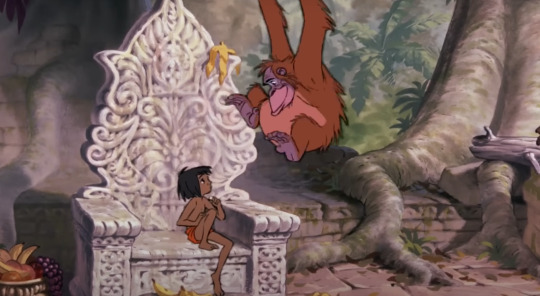
The Occident
The Occident is a person from the West, such as America, Britain, or France. It is a man-made concept, and in Orientalist ideology, the Occident is the norm. In media, oftentimes “Occidentals are superior to Orientals” [2]. This is a way that Orientalism excuses Occidentals forcing their political and culture onto Orients.
In The Aristocats (1970), Duchess, Marie, Toulouse, and Berlioz are Occidentals. They are from Paris, a Western country, and are high class “aristocats”. On the other hand, Thomas O’Malley and the other cats that appear in the “Everybody Wants to be a Cat” sequence represent poorer, other races/ethnicities/nationalities. Thomas O’Malley could be American (based on his accent), and he could also be a mixed-race person. His full name is Abraham DeLacey Guiseppe Casey Thomas O’Malley. Earlier in the film, Duchess notes that it spans all of Europe. Abraham is Hebrew, DeLacey is Norman, Guiseppe is Italian, Casey and O’Malley are Irish, and Thomas is Aramaic. Thomas O’Malley could be all of these things. Furthermore, the cat that plays the piano very clearly uses Asian stereotypes. The others could be Russian, African American, a hippie (?), etc. They do not appear to be French at least; they are the “others” to Duchess. This is exemplified in Duchess’s segment on the harp. It contrasts the rest of the music, and everyone quiets to listen to her. It suggests that she, the Occident, has more power. She is the norm, and they are the “others”. Also, the harp is viewed as more refined and high class, like Duchess. Jazz is portrayed as more emotional and fun but less perfect in the sequence. The Occident is the only high class person, so the scene contributes to the idea that “Occidentals are superior to Orientals” [3]. Furthermore, when Duchess tells Scat Cat to “put a little soul into the tune”, Scat Cat does so and plays smooth jazz, which is viewed as more elegant. Only with the help of an Occidental was an “other” able to have attention and participate in something high class. The scene can be read in support of Eurocentrism, but ultimately the song has a positive message about individuality and shows people of different backgrounds getting along, so it’s overall a good scene.

The Orient
youtube
The Orient is a person from the East, mainly Asia. Like the Occident, the Orient is a man-made concept. Orients are the “other” to the Occident. They are portrayed in the media as mysterious, exotic, dangerous, alluring, and incomprehensible, but lesser than Occidentals [4].
The Siamese Cats from Lady and The Tramp (1955) are examples of how Orients are portrayed in the media. Si and Am are Siamese Cats, one of the first recognized breeds of Asian cats. They have almond eyes and pointed teeth, paralleling the almond eyes and buck teeth that Asians are stereotypically portrayed with in the media. Furthermore, the song uses gongs, chimes, and drums which are typically associated with Asian music. They also have a thick accent, which is portrayed by Peggy Lee. It could technically be argued that they are not representative of Asians, that they are not Orients. It is pretty clear that they were inspired by post-WW2 anti-Japanese sentiments. However, in other versions of the song, it is undeniable that Si and Am are representations of Asians. They sing, “We are former residents of Siam.” In these other versions, they also sing, “There are no finer cat than we am,” portraying Orients as lesser than Occidentals. Their English is not perfect, making them less powerful than Occidentals in that sense. Even in the version of the song that made it in the movie, they have grammatical errors such as, “Where we finding baby there are milk nearby.” It’s notable how they are mischievous villains in the movie and the only cats, too. They are the “other” to the protagonists, dogs that are American. Furthermore, their uncanny synchronization further pushes the narrative that they are other. Very rarely do you find synchronized doubles in nature, pushing forth the idea that Asians are uncanny and different too. Furthermore, many times in the film they are hiding, emphasizing the “mysterious Orient” demonology. For instance, before they begin singing, they hide in a basket and you can only see their eyes (Marshall, 1989, 00:16). They are unviewable and appear to be villains. Only eyes in the dark tend to represent villains. For instance, in The Little Mermaid (1989) there’s a shot of Ursula’s eyes in the dark after instructing Flotsam and Jetsam, her henchman, to keep a close eye on Ariel, the protagonist, as she may be the key to King Triton's undoing (Marshall, 1989, 00:11:59). Combined with the Oriental caricatures, this may insinuate that Asians are evil. Overall, the Siamese Cats are Orients in Lady and the Tramp.
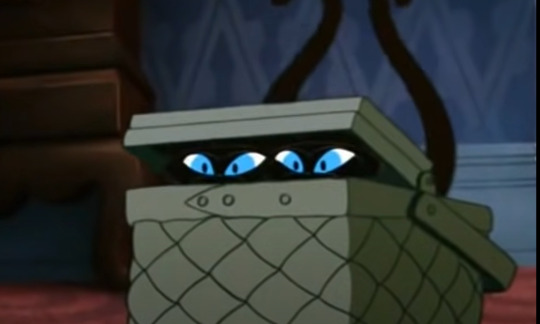

Popular Culture
youtube
Popular culture is the culture (goods, media, entertainment) that the masses consume. Stuart Hall believes that popular culture is “an arena that is profoundly mythic. It is a theatre of popular desires, a theatre of popular fantasies. It is where we discover and play with the identifications of ourselves, where we are imagined, where we are represented” [5]. Popular culture is a place to explore identity and to have discussions.
The song “What Makes a Red Man Red” along with its sequence in Peter Pan (1953) illustrate popular culture of the time. Peter Pan is a kids story that is/was widespread among the masses. The Disney movie was too. Both exist within popular culture. This makes “What Makes a Red Man Red” part of popular culture too. The scene also uses elements of popular culture during the time; it has stereotyped depictions of Native Americans. For one, they are called “injuns” and refer to themselves as “injuns”. Furthermore, this song answers three questions Micheal and the Lost Boys ask: what makes the red man red, when did he first say “ugh”, and why does he ask “how”. The responses are not based in reality or Native American culture; they are simply created by Disney for the segment. The responses are also a bit degrading. For instance, according to the song, Native Americans say “how” because they used to not know a lot of things, so they kept asking how. Considering it was 1953, these responses follow popular culture. For example, Tonto in the The Lone Ranger is a degrading representation of Native Americans. He speaks in a pidgin language and was literally created just so the main character had someone to talk to. Furthermore, some of the stereotypes portrayed still exist in more recent pop culture. Tiger Lily is portrayed pretty and desirable, whereas the older Native Americans are completely red and have unrealistic proportions. This trope of the pretty, young native woman can be seen in Pocahontas (1995), The Road to El Dorado (2000), “No Doubt” by Gwen Stefani, etc. So, Peter Pan incorporated elements of pop culture within the movie, and perhaps it contributed to what is popular culture today.
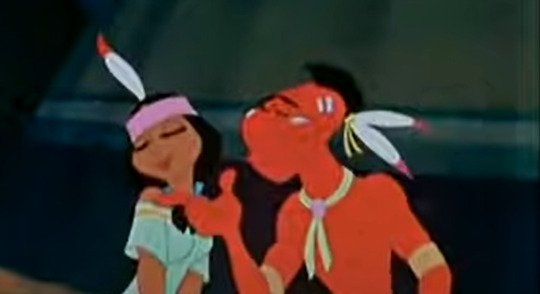

Stereotype
youtube
A stereotype is a belief held about a certain group of people. Stereotypes use images which lead to “essentialism [that] generates in its wake a certain ahistoricism” [6]. In other words, when people see something in the media, they boil the concepts down what they deem is most important to a person’s identity. This leads to a static idea about others that does not consider history whatsoever. Stereotypes are overly simplistic misrepresentations.
The crows from Dumbo demonstrate stereotypes of black people. One huge issue is that the main crow, Jim Crow, is named Jim Crow. Jim Crow (not Dumbo’s) is a caricature of a slave. It originated in minstrels, used blackface, and stereotyped speech and gestures. “Jim Crow” became an offensive term for African Americans. There were also “Jim Crow” laws that enforced segregation from 1877-1965. Overall, associating an animated character with this history in itself is terrible. Moreover, there are stereotypes portrayed in the film. For instance, the crows’ speech and the jazzy music are typical traits associated with African Americans. This creates the idea that black people are flat, 2D characters. They are only their speech and music. Also, Jim Crow’s voice actor is Cliff Edwards, a white man putting on a typical “black” accent. The other crows were portrayed by the Hall Johnson Choir, a group of black singers. However, this furthers the stereotype that white people are “better” than black people. Why was the main crow the only crow with a white voice actor? It suggests that white people are the only ones suitable as a main character; people of color are stuck in a supporting role. Overall, the crows are a harmful stereotype of African Americans.
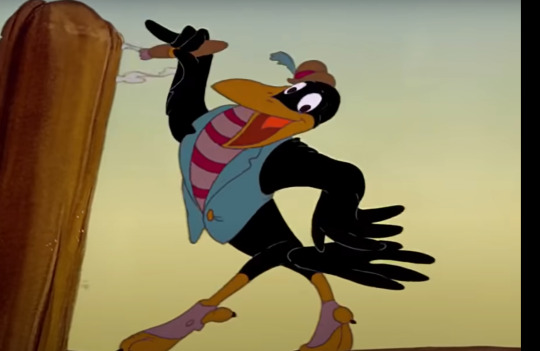
Jim Crow
[1] Stuart Hall, “What is this ‘black’ in black popular culture?” in Critical Dialogues in Cultural Studies (London: Routledge, 1996,) 471.
[2] Edward W. Said, Orientalism (London: Routledge, 1978,) 23.
[3] Edward W. Said, Orientalism, 23.
[4] Edward W. Said, Orientalism (London: Routledge, 1978).
The Little Mermaid, directed by John Musker and Ron Clements (1989; Burbank: Disney+, 2023), VOD.
[5] Stuart Hall, “What is this ‘black’ in black popular culture?,” 477.
[6] Ella Shohat and Robert Stam, “Stereotype, Realism, and the Struggle Over Representation” in Unthinking Eurocentrism Multiculturalism and the media (London: Routledge, 1994,) 199.
@theuncannyprofessoro
0 notes
Text
Edward W. Said’s “Orientalism” and Ella Shohat and Robert Stam’s “Stereotype, Realism, and the Struggle Over Representation” are about the struggle of realism and stereotypes in media.
Film, television, and popular media causes a “reinforcement of the stereotypes by which the Orient is viewed” because information is forced to fit standardized models [1]. This standardization and cultural stereotyping intensified the demonology of “the mysterious Orient” in these mediums because the stereotype has become normalized. It's easier to create a flat, stereotyped character. Furthermore, the more the media has portrayed "the mysterious Orient" as an incomprehensible other. The more that this narrative is pushed, the more this demonology is intensified.
Shohat and Stam’s article discusses representation and realism. Stereotypes generalize. Even when marginalized peoples have people to represent them, “any negative behavior by any member of the oppressed community is instantly generalized as typical” [2]. In other words, stereotypes take one characteristic of a group and say that this is how the entire group acts. This creates unrealistic representations of people. Film and television can change the perception of cultural misrepresentation because it allows for people to challenge misrepresentation. For example, many documentaries discuss stereotypes. Shohat and Stam specifically discuss Media Show: North American Indians, Images of Indians, Black History: Lost, Stolen, and Strayed, and more. People have the chance to change the perception of cultural misrepresentation through a medium that furthers the misrepresentation in the first place.
Overall, the articles show that although the media can be a cause/spreader of stereotypes and harm, it also has the power to help rid the world of these stereotypes.
[1] Edward W. Said, Orientalism (London: Routledge, 1978,) 34.
[2] Ella Shohat and Robert Stam, “Stereotype, Realism, and the Struggle Over Representation” in Unthinking Eurocentrism Multiculturalism and the media (London: Routledge, 1994,) 183.
@theuncannyprofessoro
Reading Notes 10: Said to Shohat and Stam

To wrap up our studies of visual analysis, Edward W. Said’s “Orientalism” and Ella Shohat and Robert Stam’s “Stereotype, Realism, and the Struggle Over Representation” provide critical paths to understanding the roles of race and representation play in our production and consumption of film, television, and popular culture.
How is orientalism linked to film, television, and popular media, and in what ways has standardization and cultural stereotyping intensified academic and imaginative demonology of “the mysterious Orient” in these mediums?
What role do stereotypes play in the representation of people, and in what ways can film and television change the perception of cultural misrepresentation?
@theuncannyprofessoro
16 notes
·
View notes
Text
I thought it was interesting how Lil Nas X’s video only featured one girl, and she was a police officer going to have sex with Jack Harlow. However, I thought it was really interesting that in the shower scene, Lil Nas X and other prisoners’ butts were blurred out, yet here, the woman’s butt, although she wears a thong, is not blurred out. This may create the idea that women are just for sexual pleasure, and they are not as worthy of privacy. It promotes a stereotype yet is the only representation of women in the video.
Race and Representation Music Video Analysis
For my panel discussion I will be analyzing Christina Aguilera’s “Can’t Hold Us Down” music video which ignores the power of the images within its video and the power that Aguilera has in relation to the cultures she is adopting and representing. I will also be analyzing Lil Nas X’s “Industry Baby”, which I believe attempts to provide an alternate look at stereotypes, not through a commitment to “actuality” or “positive images”, but through the experimental heightening of contrasting stereotypes about the black gay man that reveal their contradictory and arbitrary nature.
youtube
Christina Aguilera’s “Can’t Hold Us Down” music video was produced as part of her Stripped album, which was centered around a more provocative image. The song is focused on feminism with the echoing lyrics of “this is for my girls all around the world”, yet by focusing just on feminism, it markets the experiences of all women as the same, when race and other factors affect experiences. Christina Aguilera, a white passing Latina woman, fails to acknowledge the difference in her experience as a women from all the “girls around the world” while the representation within her music video, particularly her own image which is constructed from ghetto stereotypes of black or Latino womanhood.
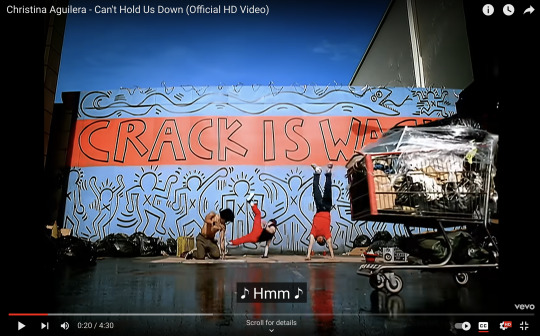
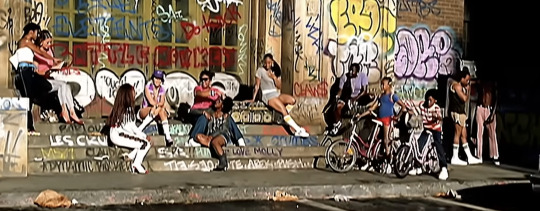
(from Left to Right) at 00:20 establishing shot shows men in front of mural mentioning crack. Grocery cart filled with trashbags (implied homelessness or poverty) are in foreground. The foreground and background of this shot simplifies and established the nature of these characters- ecliped by their identity of poverty with the possibility of illegal activity always hanging over them.
At 00:06, Christina Aguilera is introduced on the steps of the dirty curb (objects are literally being thrown down) while surrounded by Latina and Black women. Aguilera is passing herself off as one of the community, but as the star of the video and a pop star she holds all the power in the following representation of these women.
The music video starts out with establishing scenes of the urban setting filled with graffiti, dilapidated buildings, and people lounging/playing around ever corner. The assumption the audience is supposed to reach plays upon stereotypes and ideas already implemented by hegemonic culture (Said, 34). This is a portrayal of the ghetto or the gritty and unkempt. This setting allows the later behavior we see, particularly that of the men, which is supposed to represent a particular uninhibited nature, that one may not expect to see as unmasked in a suburban (read white) area.
Aguilera is using these stereotypes, of the unruly and over sexualized black man in the ghetto, and her own hyper-sexualized image of herself residing in the ghetto to give herself and the overall music video a sense of grittiness or provocativeness. Its supposed to come as a jarring departure from her previous work, as if stepping closer to Black pop-culture allows her to claim an edge which she can (and did) leave behind when the image is no longer as monetarily valuable.
If one compares this to her earlier works, one can see that she adopts the stereotypes and culture of Black and Latina women in order to appease a certain "spectatorial fascination" audiences may have (Shohat, 188). There is- as seen in many films, tv shows, and also the attitudes of certain people online- a fascination with the ghetto- a place that is the intersection between minority races and lower class (as in economic) status. There is a power in watching the ghetto while allowing the distant image of the ghetto to be relegated to perversion and unseemliness.
The way that pop culture portrays the ghetto can be compared to Said's example of the studies and portrayals of the Orient or Ella Shohat's and Robert Stam's many elaborations on films about the Third World. The assumptions about the ghetto have eclipsed the social reality of it, and it is paradoxically admonished and then revered (out of fascination for what has been admonished). Hall defines this as the "modernist construction of primitivism, the fetishistic recognition and the disavowal of the primitive difference" (470). There is the fascination with a supposed primitive or simpler nature, but the underlying admission that it is inferior or unpractical. Aguilera's power in terms of identity politics places her in a position that allows her to benefit from fascination from the scene she is portraying while always letting the audience know that this isn't who she is; she never faces the admonishment. Meanwhile, opinions of the other background characters in the video may be generalized and due to the weight that minority representations have, contribute further to negative images of certain groups.
Question:
While it is clear that Aguilera's urban setting is a selective appropriation of culture and stereotypes, it can't be denied that it is somewhat connected to a social reality, one that is steeped in imposed social, political, and economic difference. If "positive images" potentially ignore realities and obstacles to the black experience, how is meaningful representation created? In your opinion, how much meaning is their in 'truthful' representation and to what extent is that possible?
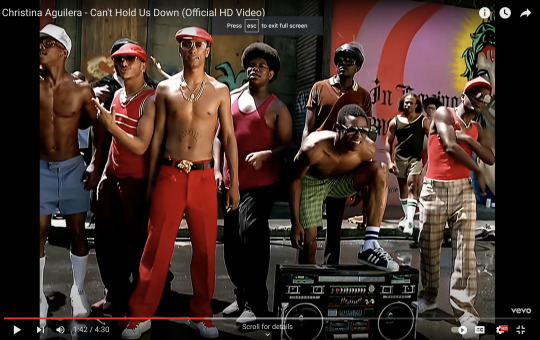
One of the groups that suffers immensely from this video is that of Black men. The video is centered around feminism and the sexual harassment that women face. It is, however, extremely hard to separate this message from the identity politics and racial power that Aguilera has over nearly everyone in the video. The person that gropes her in the beginning is a black man, thus perpetuating unseemly stereotypes that come from the caricature of the sexually and racially intimidating "buck" (Shohat, 195). It is the unruly and extremely sexualized Black man who assaults the white women and who must be admonished.
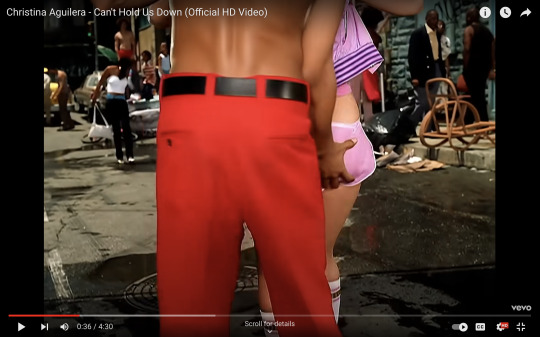
The particular choice of who is the assaulter and the assaulted plays into already created social schemas due to the (American) audience living in the inescapable context of the dominant cultural hegemony- which continues to refract itself. Through the groping it is suggested that the man is dominating the woman, but through the larger meta lense of this video, Aguilera is dominating the representation of the Black man.
Question:
What is the responsibility of Aguilera and the creators of this music video when acknowledging the harmful stereotypes it perpetrates from Black men? How could the intersectionality of identity politics have been better addressed while still maintaining its message about the sexualized or inferior role imposed upon women?
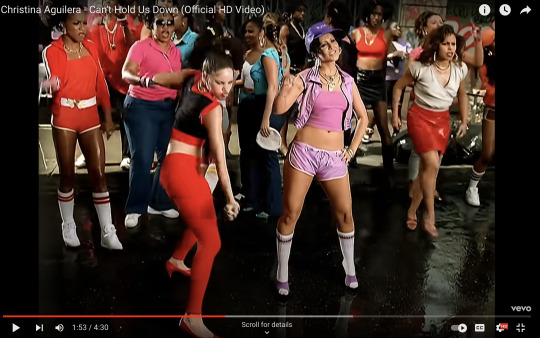
In regards to the Latina and Black women that Aguilera is supposedly upholding, they are for the most part relegated to the background. There is a power balance that is communicated through this (Shohat, 208). Through this diminishing of their importance and the centrality of Aguilera (who is then hyped up by other women), Aguilera becomes this mediating presence who is meant as a stand in (immediate representation) for the audience but also as the confronter of the power dynamic the men have over the (other) women (Shohat, 189).
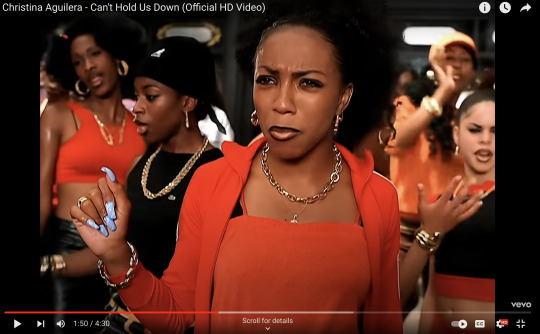
At 1:50: When other women are put in the foreground, facial expressions or seeming characteristics (sassiness, sexuality, or being a good dancer) are highlighted. This plays into racialized stereotypes of the sassy hyper sexualized Black women (something that Aguilera is trying to portray herself as) or the passionate Latina dancer (Shohat, 196).
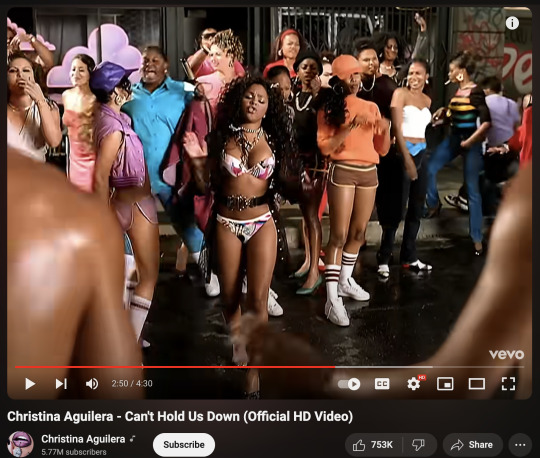

There is the particularly troubling scene with Lil Kim (who I noticed is not credited in the video title as featuring unlike the video in the queue that credits Redman). While Aguilera is adopting blackness and the characterized sexiness, tanned skin, and style of it, Lil' Kim. After being front and center, Aguilera essentially gives up some space to Lil' Kim- a sign of reverence. Lil' Kim's outfit stands out as more sexualized than the rest with more skin showing. She is portrayed as the epitome of stereotyped ghetto blackness- sexually confident (perhaps aggressive) in skimpy clothing. Unlike Aguilera, who is protected by her whiteness so that the audience distinguishes her character in the video from reality, Lil' Kim's representation becomes not only who she is, but who all urban Black woman are.
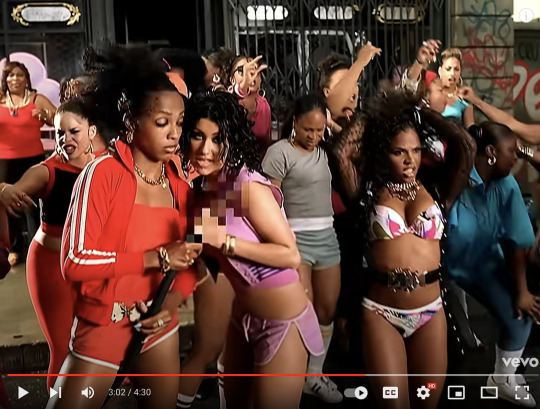
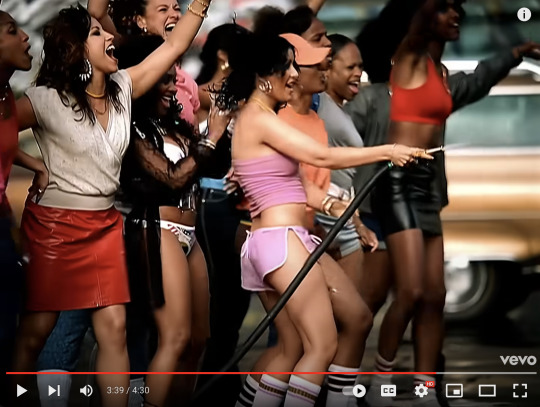
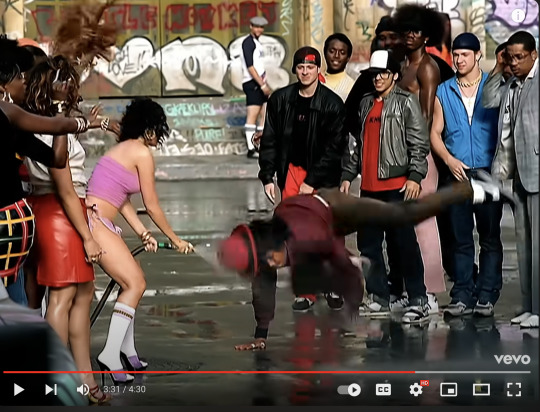
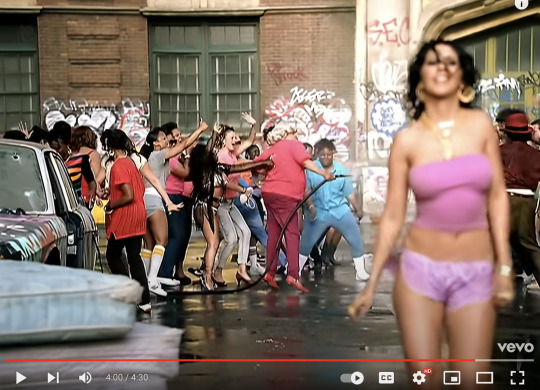
In the scenes where Christina uses the hose on the men, it is a symbolic power move where the hose plays the role of the penis. It should be noted, however, that Aguilera continues to be the one to take action against the men, as afforded by her stardom but also her role within the racial hierarchy. Someone else gets the hose only when she finally steps away. The video is ending and she gets to leave the ghetto, but the representations of Latino/a and Black women/men does not get to leave.
youtube
In contrast, Lil Nas X's "INDUSTRY BABY" provides an opportunity to focus less on images than that of discourse. Simply by Lil Nas X existing and making this video there is the relaying of a unique voice and perspective that is typically sidelined. Additionally, Lil Nas X's intersection of identity is never forgotten since it is intrinsically tied together that he is black and gay.
What makes this important representation (not a 'positive image') isn't that what is displays is some kind of authenticity, but rather the prompting of discourse it provides (Shohat, 214, 215). It fights stereotypes through subversion or even nodding to them, causing the audience to reckon with the naturalization of the original stereotypes. This can be seen by setting the video in prison. Clearly, what is shown in the video is not the reality of prison (such as the costumes), but it takes what is the reality combined with assumption to create subversion.
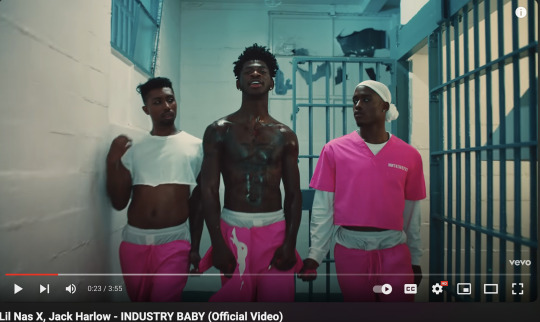
Lil Nas X takes what is expected to be a very masculine place and is able to portray it as a queer place of joy and camadarie. Usually, when there is queerness in prison it is assumed to be an act of violence that enforces heteronormativity. The isolation of the prison as well as the criminality of prisoners supposedly drives them to homosexuality. Meanwhile, there is also the obvious visual fact that Lil Nas X and many of his companions in the video are Black. The violence (particularly sexual) that is characteristic of Black caricatures comes to forefront in the prison. If the Black men were bad in the ghetto they will be terrible in prison.

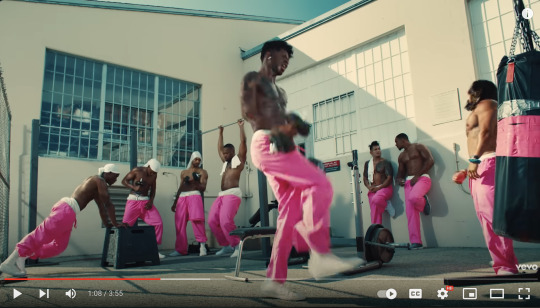
There is the complex intersectionality of multiple caricatures- the violent man in prison who resorts to homosexuality, the violent black man in prison who resorts to homosexuality, and the gay black man- who is supposedly feminine and meant (in a prison setting like this) to be dominated.
Stuart Hall talks about the potential trap of black pop culture, which often packages commodified stereotypes as "the arena where we find who [they] really are" since "it is onlty through the way in which [they] represent and imagine [themselves] that we come to know how they are constituted and who [they] are" (476, 477). There is difficulty for a black man to overcome pop cultures image of him and a nature of all to over attribute lived experience as homogenic representation (Hall, 476).
Yet Lil Nas X has always had to face his own personal rupture of the masculine identity of the black man because of the feminine identity of the gay man. It is this rupture that makes him a unique voice to listen to as he is not as trapped by the constraints of the dominant hegemonic view because of how it particularly carved out the identity (and exclusion) of the black gay man. He does not have to be made aware of the positionalities because he has always resided within a precarious intersection.
The prison can be seen as a metaphor for the very masculine world of hip hop that Lil Nas X inhibits- which matches the lyrics of his song which condemn those who sun him or believe that he can't make it in the industry because of his identity (adding the queerness on top of the hip-hop accepted blackness).
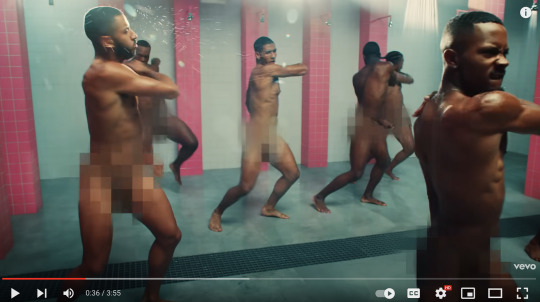
From 0:36; This scene takes a particular setting that refers to the sexual violence of prison and turns it into a performative stage of dance, a use of the body which Hall says is "the only cultural capital we had".
While many of the background dancers in scenes are black, they are not put into the background because of Lil Nas X's own identity as a black queer man. There is no inherent power dynamic besides that of Lil Nas X being the singer. The racial positionally and dominance of Aguilera's video is not present here (Hall, 471).
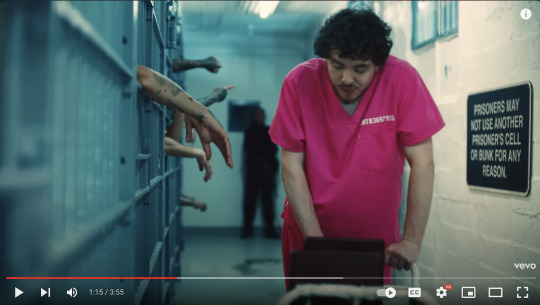
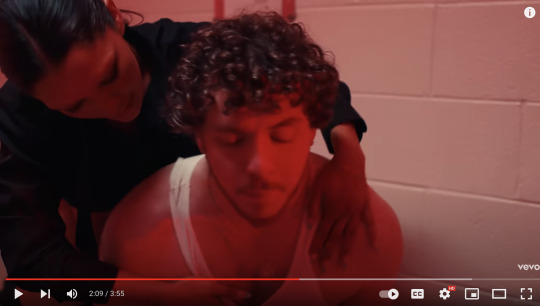
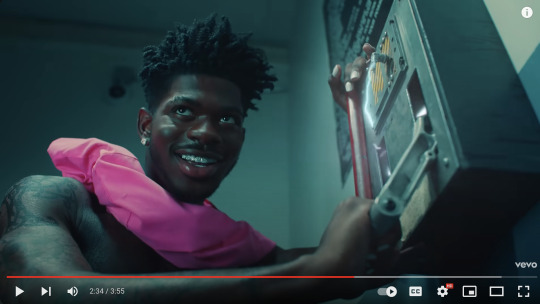
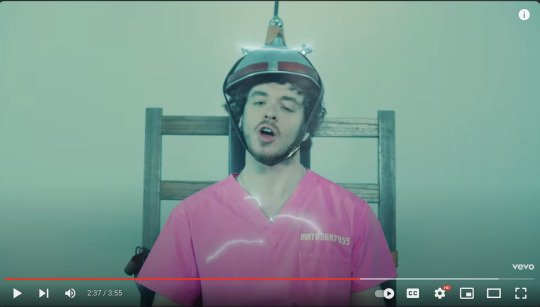
There is perhaps the question of the misrepresentation of women because of the lack of women except for one scene where Jack Harlow seduces a warden. Shohat and Stam mention how Do the Right Thing runs into a similar representational issue with its absence of a feminist voice (214). Hall notes the importance of diverse voice because of the impossibility of the homogenity or universality to any discourse. Since the video is such a analysis of masculinity, women have no place except to establish Jack Harlow's (assumed) powerful positon of a white heterosexual male. This is then subverted when it is Lil Nas X who electrocutes Harlow on the chair, as, in reality, the amount of black men sentenced to death is larger than others.
Question:
What does the video say about performative gender? Is there an intersection between performative gender and performative racial stereotypes? Or is there more of a social economic basis for the latter?
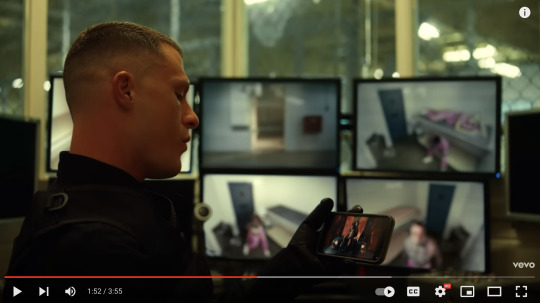
At 1:52; The sequence where a security guard is watching Lil Nas X's "Montero" video (which he is sent to this jail in this video for) right before Lil Nas X knocks him out plays with the idea of media consumption and commodification of the black rapper. It is very important this guard is white, because his dominant positon (as a white male and as the prison guard) allows him to look down upon Lil Nas X while also using him for enjoyment. To this guard (and to many audiences) the black (gay) man is a source of entertainment or a threat.
Overall, the "INDUSTRY BABY" does a better job with representation, not because it conforms to positive images that are palatable to mainstream moral conscious, but because of Lil Nas X's identity and how the video stays true to the intersection of his identity rather than trying to commodify certain stereotypes (especially ones that aren't true to him).
QUESTION:
What roles should creators from dominant cultural positions of power in promoting or working with people within marginalized groups?
Citations
6 notes
·
View notes
Text
Analytical Application 5: Gender and Sexuality
MYTHICAL NORM
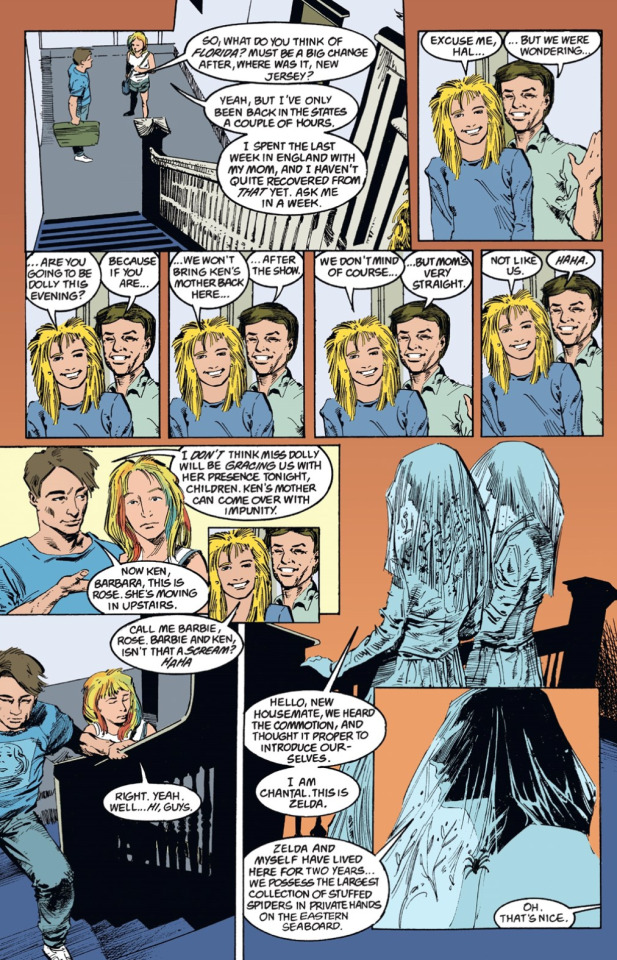
Audre Lorde defines the mythical norm as an ideal. It is the traits that make up the norm of a society, and if you have all these traits, you’ll have power. In America, the mythical norm is defined as “white, thin, male, young, heterosexual, christian, and financially secure” [1]. The mythical norm is what makes someone a “have” rather than a “have-not.”
Rose moves to Florida to search for her younger brother, Jed. She meets her strange apartment neighbors, two of which are Barbie and Ken. Barbie and Ken are embodiments of the American mythical norm. They are both white, relatively young, and in a happy, heterosexual relationship. Barbie has blond hair and blue eyes, and Ken has brown hair and a sharp jawline/cheekbone. Ken’s also a man. It’s not clear if they are Christian or financially secure, but regardless, they have many traits of the mythical norm. Furthermore, even their names are indicative of the mythical norm. “Barbie and Ken” makes you think of the Barbie and Ken dolls by Mattel. These dolls are recognized as the ideal man and woman, the ideal couple, dolls that are the mythical norm. Also, even though Barbie and Ken (in the comic) seem cheerful and friendly, they feel overly cheerful and overly friendly. This creates a feeling of hollowness. The reader cannot tell whether this hollowness indicates that they are dangerous or just shallow people; is their friendly act a facade? Or are they really poster children of perfection? Either way, this oddness about them shows that the mythical norm is just a societal ideal; it’s not real. It’s just a way for certain people to maintain their power and have a reason to oppress others. If Barbie and Ken are a representation of the mythical norm, Barbie and Ken feel off/fake/hollow because this norm isn’t based in reality. No race, age, sexuality, etc. is better than another, but society has decided that certain ones are in order to divide people. The mythical norm is fake/hollow how Barbie and Ken feel fake/hollow.
POSITIVE IMAGES
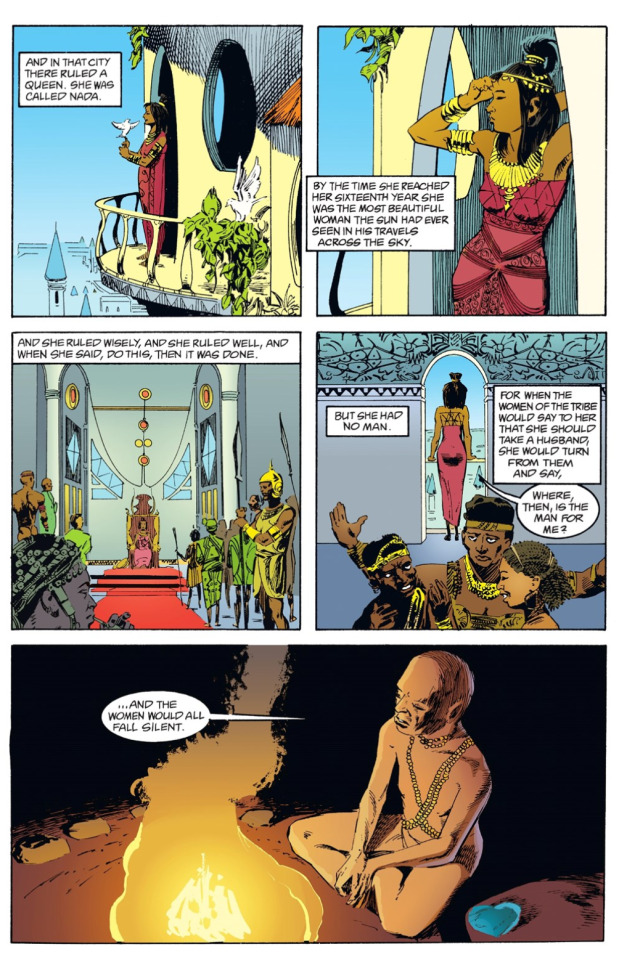
Positive images are “nonstereotyped images” [2]. Rather than promoting negative images (ex. Asians are bad drivers), positive images show marginalized peoples in positions of power or other societally positive roles. An example of a positive image would be if a black woman was CEO. Positive images can still have negative impacts, though. If you don’t see a marginalized group in that position of power outside of the screen, you may disregard them and apply the standard stereotypes to them. Also, Halberstam claims that positive images make boring cinema. Positive images are ultimately flawed because they “are no more realistic than the negative ones,” and generally terms such as positive and negative are not effective for describing representation [3].
An elderly man and his grandson walk through the desert. The grandson finds a shard of glass shaped like a heart, and as part of a manhood ritual, the grandpa tells the story of Queen Nada and Dream. In this tale, Nada is portrayed as a strong, independent, wise ruler. This is a positive image for women. Women can rule and be in positions of power; they are not reliant on men. However, Nada falls in love and becomes obsessed with finding Dream. Dream doesn’t even speak to her, yet she’s fallen head over heels for them. This may be a negative image. It pushes the idea that a woman needs a man and that her previous state of independence was very fragile. Nada was very persistent in her pursuit for Dream, though, which is another positive image. Women persevere. When she finally finds Dream, Dream’s impressed and wants to make her their bride. However, because Nada realizes Dream’s not of this world and their matrimony would be forbidden and destructive. So, she kills herself and later condemns herself to hell just to prevent the marriage. This shows that women are, in the end, strong. They stick to their beliefs and see things through. I think the mix of positive and negative images shows that positive/negative isn’t the best way to describe situations. Every action does have nuance to it; they aren’t fully positive/negative. Furthermore, although Nada is a woman of color, you can’t generalize her actions and say that all women of color will act in the same manner. It feels unreasonable and unrealistic, like a stereotype as Halberstam mentions. I think Nada, who is overall a positive image, shows that interesting characters/stories are nuanced and should not be characterized with positive/negative.
SCOPOPHILIA

Scopophilia is gaining aesthetic pleasure from looking at a person. Mulvey writes about scopophilia. She states that, according to Freud, “scopophilia [is associated] with taking other people as objects, subjecting them to a controlling and curious gaze” [4]. So, scopophilia is intertwined with the male gaze and voyeurism.
The convention center scene illustrates scopophilia well. Rose tries to look and see what’s happening in the convention center, but a man blocks her. This man then asks how old that “little girl” was. He has a creepy grin on his face, and he later tries to rape Rose. This shows that the man practiced scopophilia. He thought that Rose was pretty, and seemed to think she was even more attractive because she was young. This ties into Freud’s comment on voyeurism; people desire to look at what is private or forbidden. Rose, being young, is forbidden from this man. He even acknowledges it, and it gives him more pleasure knowing that she’s forbidden. He also says that Rose mustn't tell anyone that he played with her, adding that private, forbidden aspect to their entire encounter. Furthermore, the entire convention has this scopophilic aspect to it. All these people are here to see the Corinthian. It’s not necessarily in a sexual manner, however, they all admire him and are happy to be in his presence. Furthermore, all the attendees seem to have had scopophilic dealings before. For example, on pg 376 one of the attendees mentions specializing in transsexuals, and his victim is seen lying naked on the bed. In another instance, on pg 276 the Corinthian appears as though he will hurt a man that’s tied up, naked in the bathtub. I assume that both victims were expecting to look at their attacker. Also, Rose wanted to see the convention, a forbidden, off-limits event. Again, this is not fully scopophilia, but it has that forbidden looking aspect to it, making the whole scene feel like it’s full of scopophilia.
SEX/GENDER BINARY

Sex/gender binary is a system that categorizes people into male and female. It is what many societies traditionally follow. Also, with this model sex determines gender; they are practically synonymous. Butler claims that this is not true, and that there is a “performative and gestural conformity to a masculinity which parallels the performative or reiterative production of femininity in other categories” [5]. In other words, gender is a performance and the sex/gender binary is not accurate.
Dream and desire illustrate breaking of sex/gender binaries. Dream and Desire look more male and female respectively. However, they do not follow the gender binary. On page 438, as Dream finds out that Desire went down to Earth and impregnated Unity, Dream calls Desire “sister-brother.” This shows that Desire is not a woman. It makes sense as desire and dreams are concepts; why should their more human-like form be designated to a specific gender? Also, because they do look male/female, supports the idea that gender is a performance. A person can look more masculine/feminine based on societal ideals, even when they are not male/female. Gender can be performed. Furthermore, this representation doesn’t feel forced or novel. It feels natural for lack of better words. It’s slipped into the conversation. Additionally, these characters aren’t nonbinary/gender fluid so that it can be pointed out. This is not their topic of discussion. They are discussing what’s happening in the plot.
TO-BE-LOOKED-AT-NESS

To-be-looked-at-ness is a word Mulvey uses to describe how “cinema builds the way [a woman] is to be looked at into the spectacle itself” [6]. In cinema, women are the object, a “spectacle,” while men are the ones who are looking. The term relates to the male gaze, scopophilia, and voyeurism.
Rose naked demonstrates to-be-looked-at-ness. Rose unintentionally merges all her neighbors’ dreams together. She is floating through a galaxy-like space as Dream tries to wake her. At first she is clothed, but then her dress/possibly blanket unravels. Rose is the character to be looked at. A lack of clothing could represent her lack of knowledge/control over the situation, her vulnerability in the moment. It could also represent her power because she’s the vortex. Still, though, it supports the male gaze. She’s the object of voyeurism. Additionally, although Rose merges her neighbors’ dreams, Dream is the one who’s going to guide her and fix the situation. He’s the one who will be active; she will be more passive, making her feel more like a “spectacle.” I believe that it was not incredibly necessary for Rose to be naked in the scene. I’d compare Rose’s nakedness to a scene from the tv series “Arcane.” Mel’s mother, warlord Ambessa Medarda, comes to Piltover to help Mel prepare for a war with Zaun. In one scene, Ambessa has a conversation with Jayce. She’s in a bathtub and eventually gets up and walks over to him, naked. This furthered the plot. She’s physically strong and has scars on her back, emphasizing her toughness. Also, she’s unapologetic and intimidating. Unlike others, she doesn't care if people see her naked. This shows that she’s ready to take care of things/fight even when vulnerable. This furthers her character and packs a punch to what she’s saying. This instance of nakedness doesn’t feel unnecessary or an example of to-be-looked-at-ness. Rose’s nakedness, in comparison, feels almost entirely for the male gaze. It doesn’t do nearly as much for the story; I think that flowy, loose, thin clothing would have had a similar effect. So, Rose in this scene illustrates to-be-looked-at-ness.
[1] Audre Lorde, “The Master’s Tool Will Never Dismantle the Master’s House” in Sister Outsider (Freedom, CA: The Crossing Press, 1984), 116.
[2] Jack Halberstam, “Looking Butch” in Female Masculinity (Durham and London: Duke University Press, 1998,) 180.
[3] Jack Halberstam, “Looking Butch,” 185.
[4] Jack Halberstam, “Looking Butch,” 176.
[5] Judith Butler, “Gender is Burning: Questions of Appropriation and Subversion” in Feminist Film Theory a Reader (New York: Washington Square, 1999,) 341.
[6] Laura Mulvey, “Visual Pleasure and Narrative Cinema” in Film Theory and Criticism Introductory Readings, 5th ed. (New York: Oxford University Press, 2009), 721.
@theuncannyprofessoro
0 notes
Text
Jack Halberstam’s “Looking Butch: A Rough Guide to Butches on Film” and Stuart Hall’s “What is this ‘Black’ in Black Popular Culture?” deal with gender, sexuality, race, and representation.
One idea that Halberstam discusses are “positive images,” “the opposite of a stereotype” [1]. They are good ideas/images that incorporate people of marginalized groups. For example, in Barbie (2023), a black woman as president is a positive image. More generally, there’s positive images of Asians being good at math, women being warm and friendly, or African Americans being good at sports, etc. in films/television. These “positive images” can be damaging to marginalized communities because they “are no more realistic than the negative ones” [2]. At the end of the day, they are still stereotypes. Furthermore, a positive image is positive because it falls within the norms, and it works at the expense of someone. This means that if someone in real life does not align with the positive image on screen, they are deemed as unworthy/the negative stereotypes will apply to them. Positive images are good for the few who fall within those guidelines, but ultimately, they hurt many more people.
Culture is a complicated and political site where various identities are negotiated because it provides people with representation; however, it also furthers societal norms and negative stereotypes. For instance, Halberstam’s article mentions butches. Although it’s good for representation, it also promotes the idea that lesbians are more masculine, or rather, lesbians cannot be feminine [3]. Hall’s article concerns black popular culture. Hall states that culture “is a sight of strategic contestation. But it can never be simplified or explained in terms of the simple binary oppositions that are still habitually used to map it out,” yet these are the terms used [4]. Black popular culture is complicated and political due to oversimplification and appropriation. To shift dispositions of power, we have to take advantage of the “decentring or displacement [that] opens up new spaces of contestation and affects a momentous shift in the high culture of popular culture relations, thus presenting us with a strategic and important opportunity for intervention in the popular cultural field” [5]. In other words, if we take how postmodernism converts culture into popular, we can intervene and add in proper representation/remedy this process of commodification for the masses.
So, both articles deal with representation in the media and shine a light on some of the issues.
[1] Jack Halberstam, “Looking Butch” in Female Masculinity (Durham and London: Duke University Press, 1998,) 184.
[2] Jack Halberstam, “Looking Butch,” 185.
[3] Jack Halberstam, “Looking Butch,” 177.
[4] Stuart Hall, “What is this ‘black’ in black popular culture?” in Critical Dialogues in Cultural Studies (London: Routledge, 1996,) 473.
[5] Stuart Hall, “What is this ‘black’ in black popular culture?,” 469.
@theuncannyprofessoro
Reading Notes 9: Halberstam to Hall

Jack Halberstam’s “Looking Butch: A Rough Guide to Butches on Film” and Stuart Hall’s “What is this ‘Black’ in Black Popular Culture?” link our inquiries into gender and sexuality with race and representation.
What examples of “positive images” of marginalized peoples are in film and television, and how can these “positive images” be damaging to and for marginalized communities?
In what ways is (popular/visual) culture (performance) a complicated and political site where various identities are negotiated, and how can cultural strategies make a difference and shift dispositions of power?
@theuncannyprofessoro
16 notes
·
View notes
Text
Panel Presentation: "Justify My Love" and "One of Your Girls"
youtube
"JUSTIFY MY LOVE" BY MADONNA
The No. 1 hit single “Justify My Love” by Madonna is a song that explores desire, love, sex, and choice. The music video shows Madonna as she kisses men and women, and it also features other queer couples. The music video was banned from MTV and created a scandal due to its sensual nature.
Judith Butler, “Gender is Burning: Questions of Appropriation and Subversion”
Butler’s essay explores the construction and representation of gender. Specifically, she claims that gender is just a performance reinforced by repeated acts [1]. At the start of the music video, there is an androgynous figure shown in the hallway. They appear to be a topless woman with pearls and gloves; however, they have short hair and a slightly more masculine face (00:00:22). At a glance, it is difficult to tell whether or not this is a man or woman–does it even matter?–but it shows that gender is a performance. You choose how to present yourself to the world and looking like a man/woman is based on societal norms. A similar argument can be made for the two women in drag with drawn on mustaches; at a glance it’s difficult to tell whether they are men or women, again, supporting the idea that gender is a performance (00:04:17). At this moment, they present as men, although they are women. There are also several other people, such as an androgynous women Madonna kisses (00:02:00-00:02:41), a man cross dressing (00:04:33), and two transgender women that appear in a mirror (00:02:50) that support this idea that gender isn’t necessarily a “natural” thing, we just associate certain traits with certain genders.
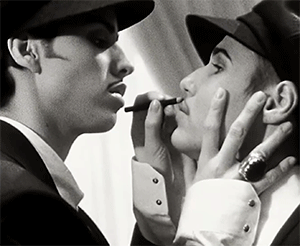
Furthermore, Butler claims that “‘imitation’ is at the heart of the heterosexual project… [and that] hegemonic heterosexuality is itself a repeated effort to imitate its own idealizations” [2]. This statement can be applied to the heterosexual couples featured in the video. At the beginning of the video, there’s a man tightening a woman’s corset. The man is muscular, dressed in leather, and has a mustache. The woman has an hourglass body figure, prominent breasts, and makeup on (00:01:21-00:01:27). The way they look follows the heterosexual ideal. The couple clearly follows gender norms through body shape and dress. They imitate hypersexual heterosexual idealizations, whether consciously or subconsciously, furthering the heterosexual project. There are several other heterosexual couples too. For one, Madonna is seen with a man, and they are both clearly feminine/masculine (00:01:05-00:01:20). Madonna is also seen on the bed as he stands above her, until the man is swapped with a woman (00:01:44-00:01:54). Additionally, there’s a close up where a man forces a woman to look at the camera. She appears to be frightful (00:04:25-00:04:28). These two examples show the following of heterosexual norms because in both, the women seem to have less power. Because Madonna’s the one on the bed, she’s the one going to have things done to her, tying into our readings about the male gaze and how women are typically featured with less power. In the second example, the woman clearly is not in control; the man forces her to look at the camera by grabbing her face. In these scenes, the couples follow the heterosexual norm of the women being more submissive.

Also, I’d like to mention the dancer in a black bodysuit. They may be a symbol of change/fluidity. When Madonna was on the bed, at first, she was with a man. Then the dancer in a black bodysuit appeared, and next there was a woman (00:01:55-00:01:57). Another time the dancer makes an appearance is before the audience sees the two transgender women in the mirror (00:02:43-00:02:46). The dancer appears again before Madonna is seen with the original man (00:03:37-00:03:40). The dancer is also seen in the shot with two men and a cross dressing man on the couch (00:04:29). In each instance, change is featured: the man is swapped for a woman, there has been a transition in gender, and there has been a transition in appearance. This ties into Butler’s essay because it shows how fluid gender is, showing how “‘being a man’ and ‘being a woman are internally unstable affairs” [3].

Judith Halberstam, “Looking Butch”
Halberstam’s essay discusses the queer gaze, positive images, and butches. The queer gaze is getting around codes/barriers by identifying queer characteristics in the people on screen. It’s a way to identify with the characters on screen even if there aren’t queer characters [4]. In Madonna’s music video, there are many queer people. However, Madonna herself can be used as an avatar within the queer gaze. Specifically, in regard to this music video, through her lyrics and performance she’s able to express her sexuality. She got pushback for it but was still able to be herself. Closeted queer people want to openly express their sexuality, so they may make Madonna their icon/live through her.
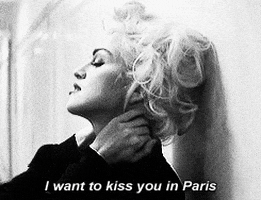
Halberstam also discusses a “positive image,” or rather, “the opposite of a stereotype” [5]. Positive images are when societally good images use marginalized peoples. Madonna’s music video has both positive and negative images, and also many neutral images. Madonna herself is a positive image. In the music video, she’s portrayed as bisexual. When she’s on the bed with the man about to have sex, she puts up her hands and says, “not like that” (00:01:50-00:01:55). This shows Madonna, the woman in the relationship, having power. It’s a positive image of women and bisexual women - they have the power to refuse what they don’t want. Furthermore, at the end of the video, there’s a black screen with a quote “poor is the man whose pleasures depend on the permission of another” (00:04:58). In this case, the man is the one presented as weaker, further supporting that women can control their situations. This is a negative image for men, though, because it promotes the stereotype that they’ll do anything for and are dependent on sex. An even more negative image would be when a man grabs a woman’s face, forcing her to look at the camera (00:04:25-00:04:28). This promotes the negative image that men have the power, and women can do nothing about it. Generally, though, there are happy, queer, couples in the video, pushing the positive image that queer couples are happy. Ultimately, there’s a blend of positive and negative in the music video.

Halberstam also discusses butches, and some are featured within Madonna’s music video. One is a woman that wears suspenders and a cop hat (00:03:11). They do appear to be a bit androgynous, but Halberstam may claim that this is a transvestite butch. The transvestite butch may do “cross-dressing and [assume] female masculinity in relation to the notion of disguise” [6]. Although women can be cops and wear suspenders, these clothes are generally more associated with men. The outfit gives the butch a more masculine feel. Also, the butch grabs the man’s head and kisses him (00:03:12-00:03:23). So, Halberstam may also classify this person as a predatory butch, a butch that’s “the gunslinger, the prison warden, the gang member, the female pimp; in short, the bulldagger” [7]. Just by dress, this person fits the bill, but based on actions, the person seems to have power, seems to be a tough guy.

------------------------------------------------------------------------------
youtube
"ONE OF YOUR GIRLS" BY TROYE SIVAN
Troye Sivan’s “One of Your Girls” expresses frustration over loving a straight man while being a gay man. The music video presents Troye Sivan dressed in drag, as he’d like to be “one of [his] girls” so that he’d be loved back in the same way.
Judith Butler, “Gender is Burning: Questions of Appropriation and Subversion”
The start of the video features a mix of more masculine and feminine men, with Troye himself appearing more feminine (00:00:01-00:00:30). This goes to show how gender is not a “natural” concept, it’s human made and just a performance. People decided what features belong to which gender, determining which guys look more masculine or feminine.
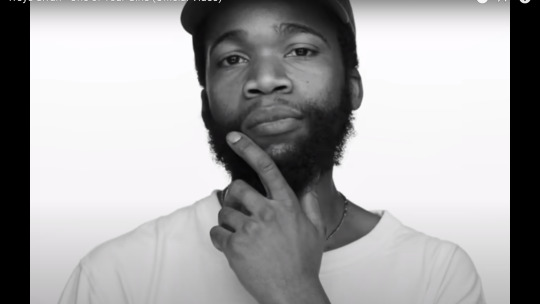
When Sivan is in drag, he’s very convincing as a woman; I didn’t realize it was him at first (00:00:53). This, again, goes to show that gender is just a performance. His makeup is done to look like a very feminine, pretty woman. Since anyone can adopt these features and pass as a woman, it suggests gender isn’t inherent as Butler claims. There are simply societal ideals of what’s feminine vs. masculine. If gender wasn’t just a performance, there would be more of a sign indicating that he wasn’t actually female.
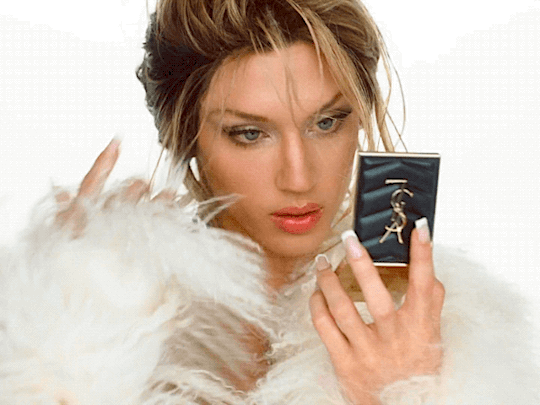
Furthermore, when Sivan was in drag giving a lap dance to another man (00:01:49-00:01:51), it showed how heterosexuality is an imitation of itself. If you didn’t know Sivan was in drag, you’d assume that this is a heterosexual couple expressing their attraction. However, because Sivan is in drag, that means this couple is not heterosexual. As Butler states, heterosexuality itself is a performance, like drag [8]. Furthermore, Sivan is literally performing; he’s dancing. He “performs” heterosexuality, or rather, imitates it at least, showing how heterosexuality is an imitation of itself.
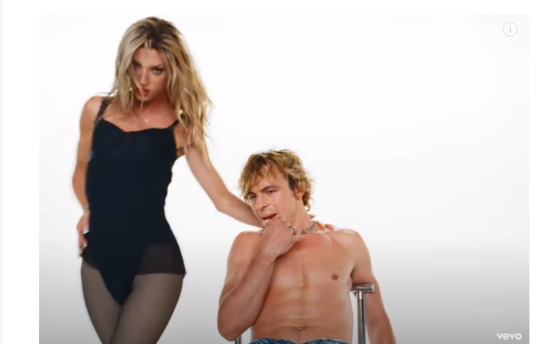
Judith Halberstam, “Looking Butch”
Although Sivan’s video doesn’t feature any butches, it does deal with queer gaze will apply. Sivan sings about being “one of your girls or homies,” showing how he'd like to be a girl just so that this guy will like him. It already has queerness infused; however, the line could be read in multiple ways. Transgender people could identify with it because it deals with wanting to be another gender. Nonbinary/gender fluid people may also be able to relate because of the line “girls or homies.” Sivan does not just say girls.
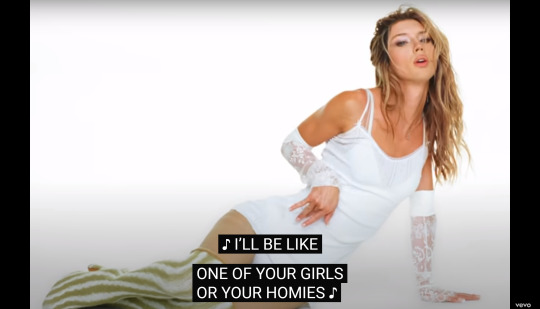
Regarding positive/negative images, there aren’t many within the music video. Portions of the video are in black and white and other portions are in color. However, all parts of the video where Troye Sivan presents himself as male are in black and white. The first instance of color appearing is when he’s in drag (00:00:31). This could be read multiple ways. One is that he’s desperate for this guy to like him, and he’ll only be happy when this man likes him. This is definitely a more negative image - it portrays gays as people who base their happiness off of what others think. However, this could also be interpreted as a positive image. The image (not necessarily the lyrics) could show that Sivan was happy when he could present as a girl. Being himself and doing what he wished made him happy. This is a positive image for trans people - they are happier when they can present themselves as their gender. Otherwise, though, no one is portrayed in a particularly positive/negative light. The song revolves around unrequited love, and you feel bad for Sivan, but it doesn't use particularly strong positive/negative images.

Discussion Questions
What are some other representations of people in drag in the media? Are these representations positive or negative? How do these representations compare to “One of your Girls”’s?
In the music video for “Justify My Love,” there is representation of different identities. However, they are all in a sexual context. What implications does this have? Is it harmful or harmless?
Madonna’s music video has a large array of queer people. However, she’s still the main focus and very feminine. Even when she kisses the girl, it seems more so for the male gaze. On the other hand, in Sivan’s video, he’s the one subverting gender norms. Sivan’s video doesn’t feature other outwardly queer people, though. Which video do you think is a better representation of queer people?
Halberstam states that “a cinema of positive images is simply not a very interesting cinema” [9]. Do you agree with this statement? Also, should we still use markers such as positive/negative to analyze representation?
[1] Judith Butler, “Gender is Burning: Questions of Appropriation and Subversion” in Feminist Film Theory a Reader (New York: Washington Square, 1999,) 338.
[2] Judith Butler, “Gender is Burning: Questions of Appropriation and Subversion,” 338.
[3] Judith Butler, “Gender is Burning: Questions of Appropriation and Subversion,” 339.
[4] Judith Halberstam, “Looking Butch” in Female Masculinity (Durham and London: Duke University Press, 1998,) 177.
[5] Judith Halberstam, “Looking Butch,” 184.
[6] Judith Halberstam, “Looking Butch,” 206.
[7] Judith Halberstam, “Looking Butch,” 194.
[8] Judith Butler, “Gender is Burning: Questions of Appropriation and Subversion,” 338.
[9] Judith Halberstam, “Looking Butch,” 184.
Madonna, “Justify My Love,” dir. by Jean-Baptiste Mondino, Sire Records, 1990, video, 4:58, https://youtu.be/Np_Y740aReI?si=Fw15pQmSolKPVrvY.
Troye Sivan, “One of Your Girls,” dir. by Gordon von Steiner, Capitol, 2023, video, 3:09, https://youtu.be/ZhGl8McrOHo?si=SVN4aU5ei642a_BD.
@theuncannyprofessoro
9 notes
·
View notes
Text
Audre Lorde’s “The Master’s Tools Will Never Dismantle the Master’s House” and “Age, Race, Class, and Sex: Women Redefining Difference,” and Judith Butler’s Gender is Burning: Questions of Appropriation and Subversion” discuss gender, sexuality, societal norms, and power.
Power and privilege worsen divides among people. For instance, although Lorde went to a women’s conference, most of the women were white and heterosexual, and there were only two Black women [1]. This shows that there’s a lack of representation. Although women are marginalized by the patriarchy, there is still marginalization within this marginalized group. White, heterosexual women still have more power, which is why they get representation and other women don’t, furthering a divide between different peoples. Power is used to benefit certain people and oppress others, putting strains on relationships between people and institutions. To remedy oppression and marginalization, “difference must not be merely tolerated, but seen as a fund of necessary polarities between which our creativity can spark like a dialectic” [2]. In other words, new ideas and ways to remedy oppression come from accepting the differences that oppressive and marginalized systems have made out to be negative. We must “root out internalized patterns of oppression… recognize differences among [us]... and devise ways to use each other’s differences to enrich our visions and our joint struggles” [3].
Butler’s article argues that gender is a performative act that humans invented. Cultural, societal, and media representations support gender performativity because “this ‘being a man’ and this ‘being a woman’ are internally unstable affairs” [4] which hinge on “identifying with a set of norms” [5]. In other words, people need to act in a way according to societal norms to appear like a man/woman. The more often we see “manly/womanly” traits associated with men/women in media, it supports the idea that gender is just a performance; anyone can adopt these traits. However, this also means that gender norms can change over time. For example, men used to wear skirts and heels, but now those clothes are the gender norm for women. Enough women began to wear dresses/heels while men stopped wearing them. Gender norms are based on performance, complicating them and subjecting them to change. Heterosexuality is also a performance because ‘“imitation’ is at the heart of the heterosexual project and its gender binarisms” [6]. Heterosexuality isn’t the norm/standard/natural sexuality, but it’s become the norm because we keep imitating that performance and have made it the norm.
Together, both articles describe gender and sexuality. Butler’s article describes them as a performance and how that creates societal norms, and Lorde’s article describes how these norms give certain people power and divides society.
[1] Audre Lorde, “The Master’s Tool Will Never Dismantle the Master’s House” in Sister Outsider (Freedom, CA: The Crossing Press, 1984), 110.
[2] Audre Lorde, “The Master’s Tool Will Never Dismantle the Master’s House,” 111.
[3] Audre Lorde, “The Master’s Tool Will Never Dismantle the Master’s House,” 122.
[4] Judith Butler, “Gender is Burning: Questions of Appropriation and Subversion” in Feminist Film Theory a Reader (New York: Washington Square, 1999,) 339.
[5] Judith Butler, “Gender is Burning: Questions of Appropriation and Subversion,” 339.
[6] Judith Butler, “Gender is Burning: Questions of Appropriation and Subversion,” 339.
Reading Notes 8: Lorde to Butler
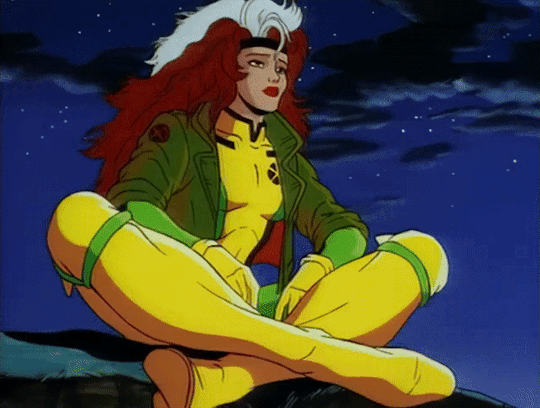
In our continued discussions, Audre Lorde’s “The Master’s Tools Will Never Dismantle the Master’s House” and “Age, Race, Class, and Sex: Women Redefining Difference,” and Judith Butler’s Gender is Burning: Questions of Appropriation and Subversion” provide further introspection into systems and definitions of gender and sexuality.
How do power and privilege impact the relations people have with each other and with institutions, and how can we acknowledge, examine, and remedy oppression and marginalization using oppressive and marginalized systems?
How do cultural, societal, and media representations support gender performativity and in so doing complicate gender norms, and in what ways is heterosexuality a performance?
@theuncannyprofessoro
17 notes
·
View notes
Text
In your post, you described how Michael Jackson's transformation into a zombie can be interpreted as a metaphor for Black individuals being portrayed as "other." You also claimed that this scene is uncanny because of its relation to death/animate/inanimate; however, I believe that this metaphor is what makes the scene especially uncanny. It combines racial issues (the heimlich) with zombies (the unheimlich), creating uncanniness. Also, because racial issues already make people uncomfortable, it adds extra discomfort/unsettlement to the scene.
Psychoanalysis and Subjectivity
youtube
"Thriller" by Michael Jackson, released in 1983, is not just a song but an iconic cultural phenomenon, with its music video setting new standards for the industry. Directed by John Landis, the video is a mini horror film featuring Jackson as a charismatic young man transformed into a werewolf alongside his love interest, played by Ola Ray. The video showcases Jackson's unparalleled talent as a performer, with his electrifying dance moves and mesmerizing presence. Its groundbreaking special effects and narrative storytelling revolutionized the music video medium, becoming an instant classic. "Thriller" remains a timeless masterpiece, captivating audiences with its fusion of music, dance, and cinema, leaving an indelible mark on pop culture for generations to come.

Sigmund Freud's essay "The Uncanny" explores the concept of the uncanny, or the eerie feeling of discomfort or unease experienced when something seems strangely familiar yet simultaneously foreign or unsettling. Freud delves into various aspects of the uncanny, including its connection to repressed desires, the repetition of specific themes or motifs in literature and art, and its association with the return of the repressed. He ultimately suggests that the uncanny arises from the revival of primitive beliefs and fears, often related to death, castration, or the supernatural, which have been repressed into the unconscious mind. This reminds me of the entire motive of the music video, which is the aspect of death. Sigmund said, “the primitive fear of the dead is still so strong within us and always ready to come to the surface at any opportunity”(Freud, 369). Death is the main factor that spikes an uncanny feeling. Our conscious mind feels eerie when we can not define whether something is animate or inanimate. This can also be viewed through the lens of Fenon’s theory because of the transformation, performance, and cultural appropriation that happens in this video. A transformation can be seen as a metaphor for the way Black individuals have been historically portrayed as "other" or different in Western society, often associated with fear and negativity. However, it also ties into Lacan’s theory of identity and self-representation. The transformation can be interpreted as a commentary on the pressure for Black individuals to conform to white standards of beauty and behavior, which makes them see themselves differently because of social interactions.
Question: How often do you see the black community transform into something other than being black, and how much of an impact do you think it has?
youtube
"Black or White" is a groundbreaking music video by the iconic artist Michael Jackson, released in 1991. Directed by John Landis, the video captivates audiences with its innovative visual effects and powerful message of racial unity. Opening with a diverse array of faces from around the world morphing into one another, the video symbolizes the interconnectedness of humanity. Jackson's electrifying dance moves and charismatic performance are showcased against a backdrop of vibrant sets and dynamic choreography. The video's climax features a montage of people breaking through barriers, emphasizing diversity, acceptance, and equality themes. Through its striking imagery and infectious rhythm, "Black or White" remains a testament to Jackson's unparalleled talent and a timeless anthem for social change and harmony.

Frantz Fanon's essay "The Negro and Psychopathology" delves into the psychological impact of colonialism and racism on Black individuals. Fanon explores how the experience of oppression and discrimination leads to a profound sense of alienation, identity crisis, and psychological trauma among Black people. Frantz Fanon said, “The Negro recognizes the unreality of many of the beliefs that he has adopted with reference to the subjective attitude of the white man”(Fanon, 115). He implies that Black individuals have internalized certain beliefs or attitudes, possibly about themselves or about the world, that are based on the perspective or viewpoint of white people. However, they have come to recognize that some of the beliefs held by white people are not grounded in reality or are false. This means that things that are said about the black community usually is said to make them feel bad. The saddest part is that it is so engraved in our system that naturally, it just reproduces.
One aspect that correlates with Fanon's ideas is Jackson's own experience of racial identity. Throughout his life, Jackson grappled with questions of race and belonging, facing scrutiny and pressure to conform to societal expectations of blackness. His changing appearance, particularly his skin color, sparked speculation and debate about his racial identity and self-image. Fanon would likely view Jackson's transformation as a manifestation of the internalized racism prevalent in societies where lighter skin is often associated with beauty and success. This also makes me think about how his skin transformation can be perceived as uncanny. The transformation can be perceived as uncanny due to its combination of familiarity and strangeness, its psychological implications, the public reaction it elicited, and its broader cultural significance. It made him seem familiar but also unfamiliar.
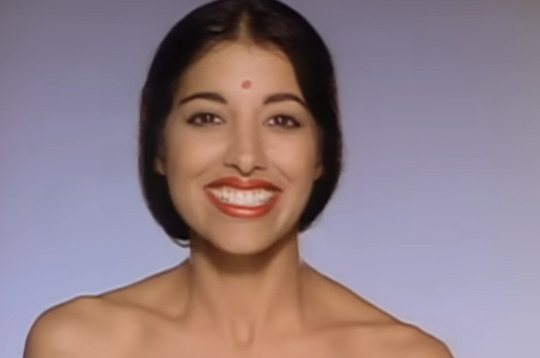
This scene of the music video resonates with Jacques Lacan’s “The Mirror Stage as Formative of the Function of the I” through its exploration of identity, diversity, and unity. Just as Lacan explains that the mirror stage marks a pivotal moment in the formation of the self, the video showcases individuals from diverse ethnic backgrounds, highlighting the complexity of identity formation in a multicultural world. Lacan said, "Whence it is that the relation of the individual subject to his own images is apprehended, prior to any grasp of it by the self, in a specular relation of the organism to its reality, and that, whatever may be the degree of elaboration of the imaginary function, its mediation is necessarily situated in the intersubjective dialectic"(Lacan). This statement explains that individuals have an inherent, perhaps unconscious, relationship with their mental images or representations, which reflects their perception of reality. This relationship is influenced by interpersonal dynamics and interactions, highlighting the interconnectedness between self-awareness and social experiences. Social interactions really change the way one views oneself, which sadly becomes subconscious critiquing.
Question: Do you guys view transformation as uncanny, and why do you think some people do? Do you think when you first understood your image was the only time you fully saw/respected yourself?
Sources
Freud, Sigmund. "The Uncanny." The Standard Edition of the Complete Psychological Works of Sigmund Freud, edited by James Strachey, vol. 17, Hogarth Press, 1955, pp. 219-256.
Lacan, Jacques. "The Mirror Stage as Formative of the Function of the I." Écrits: A Selection. Translated by Bruce Fink, W.W. Norton & Company, 2002, pp. 75-81.
Fanon, Frantz. "The Negro and Psychopathology." Black Skin, White Masks, translated by Charles Lam Markmann, Grove Press, 2008, pp. 99-127.
9 notes
·
View notes
Text
Laura Mulvey’s “Visual Pleasure and Narrative Cinema” and bell hooks’s “Oppositional Gaze: Black Female Spectators” both deal with scopophilia, female objectification, and how different audiences respond to what’s on screen.
In Mulvey’s essay, she illustrates unequal treatment of men and women in movies. In films, the female image is something to look at. Under a patriarchal ideology, the “narrative supports the man’s role as the active one of forwarding the story, making things happen” [1]. This leaves women in a passive role; the male protagonist needs someone to do something to/for. For example, usually in fairy tales princes are active and save the damsel in distress, and the damsel in distress is really just there to look pretty. She is just an icon and justification for the plot, not a real character. Females are objectified in cinema. Also, according to Mulvey, all viewers take pleasure in films that are designed to satisfy the male gaze because “there are circumstances in which looking itself is a source of pleasure,” such as when we look at private/forbidden objects or when we look at things in order to identify with them [2]. Films are created in a way so that looking can be pleasurable. It is catered towards men, but women can take pleasure in it too/have to look through the male gaze so they will find pleasure. So, Mulvey claims that everyone can find pleasure in film, however, because of patriarchy, women are objectified in it.
Although Mulvey claims that all audiences find pleasure in cinema, hooks claims that the experience is different for marginalized groups, specifically black women. The male gaze abuses and alienates black women, so movies lose their enjoyability. They have an outsiders’ perspective on the movie rather than an engaged, happy audience member. So, because of “class exploitation, and racist and sexist domination, it has only been through resistance, struggle, reading, and looking 'against the grain,' that black women have been able to value our process of looking enough to publicly name it” [3]. In other words, black women have an oppositional gaze. With this oppositional gaze, black women “create alternative texts that are not solely reactions” because there’s no space for them in the mainstream media [4]. These new works lead to empowerment among viewers. So, because of the media’s abuse, certain viewers can’t enjoy films, which leads to the creation of new works and empowerment.
Overall, both articles show that different audience members experience film differently.
[1] Laura Mulvey, “Visual Pleasure and Narrative Cinema” in Film Theory and Criticism Introductory Readings, 5th ed. (New York: Oxford University Press, 2009), 716.
[2] Mulvey, “Visual Pleasure and Narrative Cinema,” 713.
[3] bell hooks, “The Oppositional Gaze: Black Female Spectators” in Feminist Film Theory A Reader (Washington Square: New York University Press, 1999), 313.
[4] hooks, “The Oppositional Gaze: Black Female Spectators,” 317.
Reading Notes 7: Mulvey to hooks
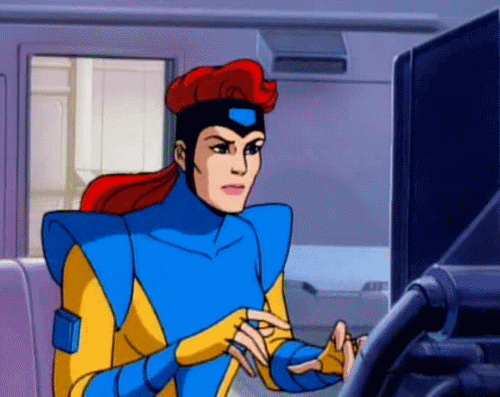
Shifting our visual analysis and critical inquiries to gender and sexuality, we will begin our explorations with Laura Mulvey’s “Visual Pleasure and Narrative Cinema” and bell hooks’s “Oppositional Gaze: Black Female Spectators.”
How does the spectacle of the female image relate to patriarchal ideology, and in what ways do all viewers, regardless of race or sexuality, take pleasure in films that are designed to satisfy the male gaze?
How do racial and sexual differences between viewers inform their experience of viewing pleasure, and in what ways does the oppositional gaze empower viewers?
@theuncannyprofessoro
17 notes
·
View notes
Text
Analytical Application 4: Psychoanalysis and Subjectivity
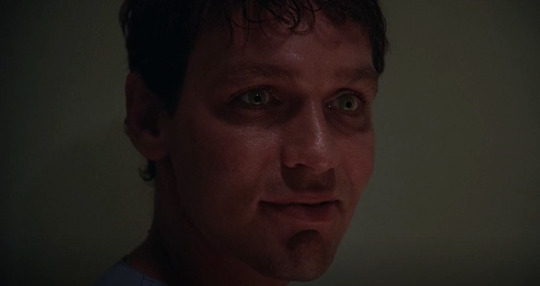
Uncanny
The uncanny is an unsettling feeling. It has to do with dread, the sense that something is off. It concerns intellectual uncertainty and is “that class of terrifying which leads back to something long known to us, once very familiar” [1]. For instance, many AI robots are uncanny because they seem like humans yet clearly aren’t; they are familiar yet unfamiliar at the same time, making them uncanny.
An uncanny scene in “Squeeze” is the ending scene. Tooms is caught and in his jail cell, licking pieces of newspaper (Nutter, 1993, 00:40:00-00:40:14). There is intellectual uncertainty regarding this; people don’t lick newspapers, unless they are a young child and don’t know what they’re doing. So, because Tooms is performing an odd but childish, heimlich, action, uncanniness is created. Mulder tells Scully that Tooms is building a nest (Nutter, 1993, 00:40:24-00:40:28). Although the intellectual uncertainty regarding what Tooms is doing is solved, more intellectual uncertainty is created. Why is he so adamant about building his nest? Is his hibernation inevitable? How does his life work? Uncanniness is also created because people don’t build nests, animals do. What exactly is Tooms? An animal? An alien? Tooms’ actions are familiar and recognizable, however, uncanny because it is in combination with his human body. Mulder then comments on how people spend lots of money on bars for their windows to keep them safe, but it’s never enough (Nutter, 1993, 00:40:50-00:41:05). This statement is especially uncanny; it relates the story to the audience and leaves the story on a note of intellectual uncertainty. Tooms isn’t just an evil character in a story, there could be a Tooms out there that gets into your home, even if you have bars on your windows. You can never know, though. The last shot features Tooms staring at the food port (Nutter, 1993, 00:42:04). For one, it creates a sense of dread, especially in conjunction with the music, that Tooms will escape. He also has a creepy smile, as though he’s proud of himself and taking livers. It’s unsettling that he can even live with himself. Furthermore, Tooms wide, piercing eyes don’t appear to be staring directly at the food port. His eyes seem to be staring at something else, but what else is there? Does he know something that we don’t? If so, Tooms is in control, a terrifying concept. The final scene with Tooms is very uncanny, however, the entire episode and very concept of Tooms is deeply unsettling.

Heimlich
According to Freud, the “heimlich… [means] ‘familiar,’ ‘native,’ and ‘belonging to home’” [2]. It is what we know. This is the main definition of heimlich, however, it can also mean “concealed, kept from sight, so that others do not get to know about it, withheld from others” [3]. This is why Freud claims the heimlich blends with the unheimlich, and why it lends itself so well to the uncanny.
A scene that incorporates the heimlich is when the office worker is killed. An employee is in the office working overtime, and when he goes into a room, the audience hears a struggle. The next thing we see is the employee, dead (Nutter, 1993, 00:01:11-00:03:22). Most people are familiar with office workers, overtime, and office buildings. The audience is familiar with elevators, phones, and air ducts. The setting is very familiar, heimlich. What is unheimlich is the murder - many people don’t have first hand experience with it. Furthermore, the way the Tooms got in was unheimlich - most killers don’t climb through an air duct and unscrew/screw the screws. However, Tooms is also hidden in this scene, making him heimlich. He has no direct screen time (minus his fingers). What he looks like is a mystery. Furthermore, there are many shots of the entrances he could have used, for example, the open, empty elevator shaft and the air duct. Tooms himself is still hidden, though. Also, a lot of the scenes are dark or have occluded areas, creating the heimlich. For instance, the office worker calls his wife in a dark room. He also walks through an area with many cubicles, creating spaces that Tooms could be hiding even though the room is brightly lit. Even the kill happens off screen in another, hidden room. So, in this scene, the heimlich appears as both the familiar and the hidden.

Unheimlich
According to Freud, the “unheimlich is obviously the opposite of heimlich” [4]. The unheimlich is eerie, creepy, unsettling, and unfamiliar. However, unheimlich tends to only use this one definition, unlike the heimlich and how it can mean familiar and hidden. The unheimlich has to do more with the intellectual uncertainty part of the uncanny.
In the previous section, I discussed how there is heimlich in the first scene where Tooms attacks the office worker, and now I will discuss the unheimlich in this scene. Firstly, when the elevator door opens, the audience sees an elevator cable (Nutter, 1993, 00:01:25). This is unfamiliar to the audience because most people don’t work on elevators. We see the inside of the cars, not the cables. We are unfamiliar with malfunctions. Why would the elevator doors open if the elevator car hasn’t arrived? It’s off putting when machines don’t work. Furthermore, it is unheimlich that the office worker is calling his wife in the dark (Nutter, 1993, 00:01:35-00:01:57). Aren’t offices normally well lit, not by a single desk lamp? It’s eerie. Why doesn’t he turn on the overhead light? The dark itself creates uncertainty and there’s uncertainty about the man’s actions, lending to a creepy, dreadful feeling. Also, the screw for the air duct unscrewing itself is incredibly unheimlich (Nutter, 1993, 00:02:04-00:02:11). Screws can’t do that on their own. It’s not familiar; it is out of place. Who is doing this? And why so meticulously? Is it happening on its own? The man’s attack by Tooms is also unheimlich. I’d hope that most people aren’t familiar with brutal attacks and find them to be eerie. There is also clearly a struggle because the doorknob shakes so violently (Nutter, 1993, 00:02:31-00:02:40). Although a doorknob moving is familiar, and we see it in everyday life, it is unfamiliar because here it is done so aggressively, and the context makes it unfamiliar. Rather than trying to simply enter/exit a room, this is someone trying to escape a room, trying to save their own life. In total, there are many unheimlich aspects to the office worker’s attack, but ultimately the heimlich and unheimlich are intertwined with one another.

Mirror stage
Before the mirror stage, people are their true, authentic selves. However, then the mirror stage takes place. Lacan describes the mirror stage as “the transformation that takes place in the subject when he assumes [assume] an image” [5]. In other words, it is the time period in which we create our own identity, an imaginary image that we believe to be ourselves. The mirror stage is when we create the split between our true self and our identity.
A scene that illustrates the mirror stage is when Scully is working with Colton and other FBI agents. Scully discusses how the cases could be possibly related, and the next actions that they should take to catch the killer (Nutter, 1993, 00:11:00-00:12:13). The men in the room take her seriously but also mock her, saying that she’s welcome to work overtime in a department that’s “a bit more down to earth” (Nutter, 1993, 00:12:08). Although Scully’s identity isn’t splitting from her true self for the first time, she’s forced to think about this identity created from the mirror stage. Is it better for her to work in this new department? Is the X-Files just a bit too spooky? Should she try to fit into the societal norm, even if this is not what her true self wants? Also, it’s worth noting that Scully is the only woman in the room, and seemingly the FBI. This may influence her thoughts, perhaps she is the other to a man. If she is a man’s other, she may start doubting her own abilities. It may cause her to present herself in a more manly matter, to make her identity more manly, whereas her true self remains a woman. So, in this scene, Scully may be considering changing her identity to be less spooky and more manly. This is a result of the mirror stage; if her identity hadn’t split from her true self, she wouldn't need to consider changing the way she presents herself to the world.

Collective Unconscious
Fanon describes the collective unconscious of an archetype “an expression of the bad instincts, of the darkness inherent in every ego, of the uncivilized savage, the Negro who slumbers in every white man” [6]. In other words, the collective unconscious of a typical person is the stereotypes, myths, and attitudes towards a certain group of people. So, more generally, the collective unconscious is the shared ideas of a population.
Tooms’ character is the representation of the collective unconscious of the scary, evil people in the world. His uncanniness and scariness is based on the fear that we are not safe in our own homes, that something could happen to us and for hundreds of years no one would know what occurred, and that a person could be lurking in the shadows, stalking us. Tooms is a representation of the collective unconscious fear of an invasion of privacy and there being an unnoticeable evil. A specific scene that demonstrates this is when Tooms attacks Scully. The scene begins with the camera slowly moving around the corner, revealing Scully in the bathroom (Nutter, 1993, 00:36:30-00:36:45). This creates the feeling that the camera is hiding from something or trying to hide from Scully. Either way, the collective unconscious is afraid of people invading their privacy. Then, we see Tooms appear by the window, but not his face, just his hand/side of his body (Nutter, 1993, 00:37:03). Again, he’s invading privacy, and since the collective unconscious deems this action as wrong, he is in the wrong. There is also a drip from the air vent, informing Scully that Tooms will enter this way (Nutter, 1993, 00:37:40). Crawling through the vent like an animal is another idea the collective unconscious has decided as strange/creepy. Tooms then appears in another air vent, grabbing Scully’s ankle, trying to pull her into the vent (Nutter, 1993, 00:38:11-00:38:21). At this point, he’s assaulting her. When he comes out of the vent to attack, Tooms pins Scully to the ground (Nutter, 1993, 00:38:28-00:38:40). It feels as though he may sexually assault her, even though the audience knows that he’s trying to steal her liver. Tooms invades Scully’s privacy in a different manner, making him out to be an even more terrifying character. So, because the collective unconscious agrees that assault and invasion of privacy are immoral, terrible acts, and Tooms does these things, it is clear that he is an evil person. He is the collective unconscious of an archetype of a “bad guy,” such as a law breaker.
[1] Sigmund Freud, The Uncanny, trans. James Strachey (Imago, 1919), 1.
[2] Freud, The Uncanny, 2.
[3] Freud, The Uncanny, 3.
[4] Freud, The Uncanny, 2.
[5] Jacques Lacan, “The Mirror Stage as Formative of the I Function,” in Écrits, trans. Bruce Fink (New York: W. W. Norton & Company, 2006), 95.
[6] Frantz Fanon, “The Negro and Psychopathology,” in Black Skin White Masks, trans. Charles Lam Markmann (London: Pluto Press, 1986), 144.
The X-Files, season 1, episode 3, “Squeeze,” directed by David Nutter, written by Glen Morgan and James Wong, featuring Gillian Anderson and David Duchovny, aired September 24, 1993, on Fox, VOD.
@theuncannyprofessoro
0 notes